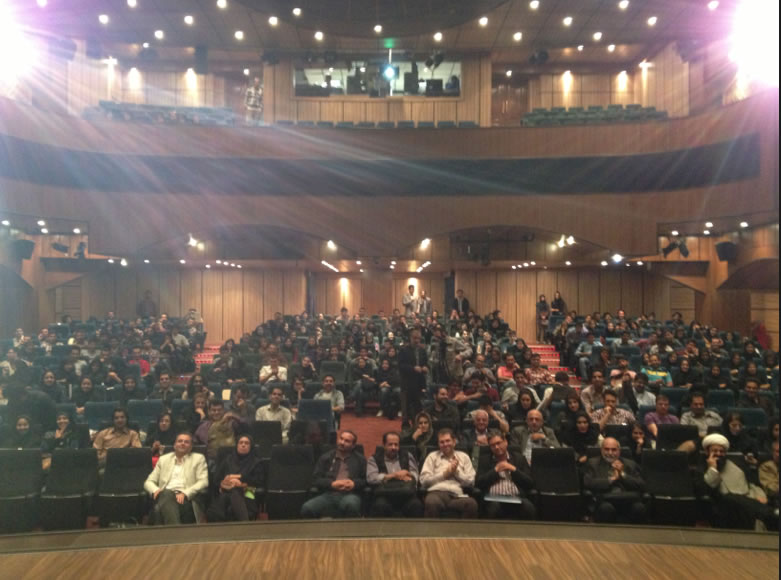Talks
Talks
con i sentiti ringraziamenti al
prof. dr. arch. Hassan Osanloo
Ascolta l'audio derlla conferenza
in Italiano e Persiano
Space Time and Information
Sunday 12th May 10:00 -12.00 Architectural Faculty of Sooreh University (Hafez St., Somaye Corner, Hoze Honari, Soore saloon)
![]() Special Three Days Iran Lecture Free DownLoad
Special Three Days Iran Lecture Free DownLoad ![]()
Read the
New Substances. A
Manifesto for An Architetcure of Information
anche In Persiano
An intellectual walk
1. Industrial city / versus Information city, key differences
2. The Changing Notion of Time | 3. The Changing Notion of Space
4. The Prothesis | 5. Looking Inside | 6. Time to Define Space |
7. What Is Space | 8. Space IS Information | 9. Crisis Modernity and Information Technology |
| 10. New IT Paradigms | 11. Works
1. Industrial city / versus Information city key differences
Assembly Line vs Network
i.e. zoning vs anti zoning

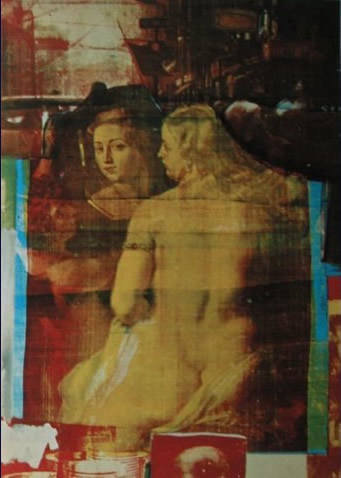
Piet Mondrian -Broadway Boogie Woogie 1942-43; Oil on canvas, 127 x 127 cm; The Museum of Modern Art, New York
Rauschenberg, Persimon, 1964
Chain vs Nets

Le Corbusier, Plan Voisin, paris 1935 Michael Najjar "The Invisible citry" 2004.
Video Clip della serie Netropolis 2003-2006
in front versus in between

Mies | Eisenman
the far west versus nature and "ecotechnics"



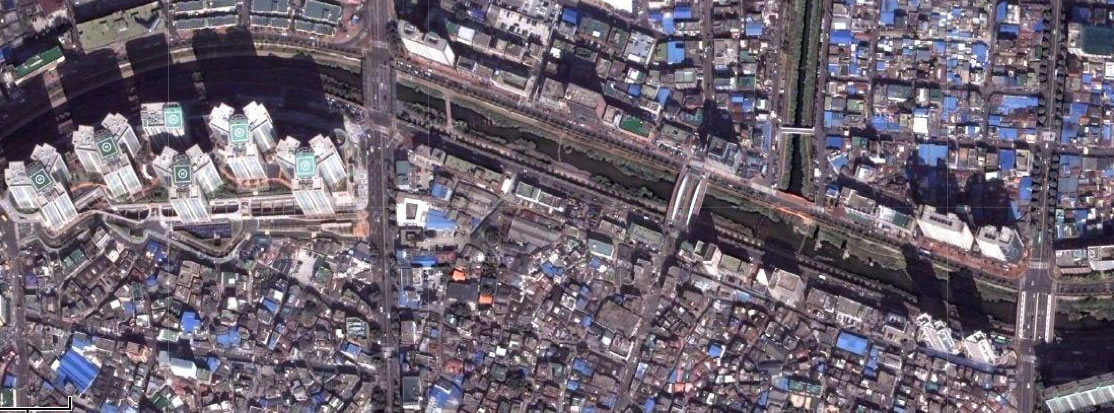

go to the site in Google map, NY city
Social, Environmental, Design, Economici Impact ....Systmatic impact
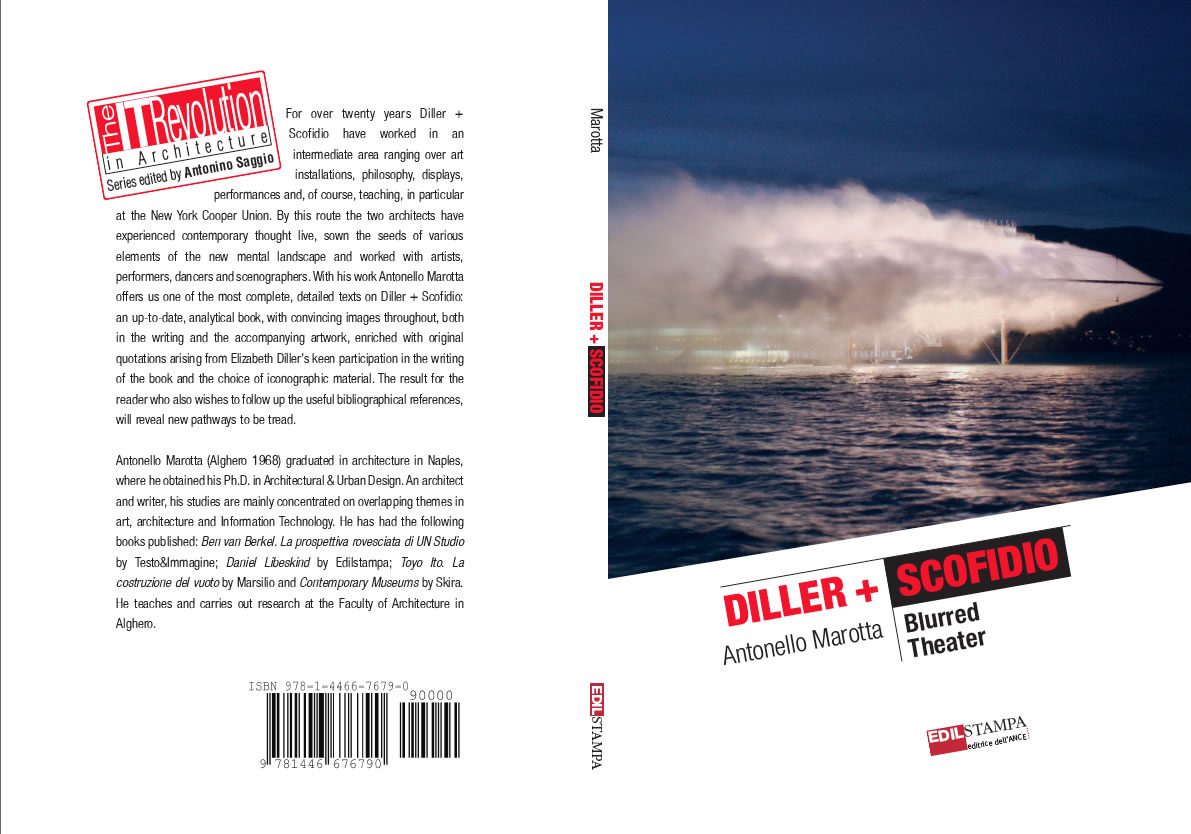
Towards Emotional interactive enviroments in the city

Jam Frequency Olivieri Marco,Pitzalis Federico, Janni Gordon, Marinelli Alessandro, Saggio Course La Sapienza Local > Web >
all the works of Texpo >
RAD Oma consultant ,Sk Building Seoul See Building Movie Local >YoTu..be >
2. The Changing Notion of Time
Gropius, Bauhaus, Mark Goulthorpe Decoi, >The wall

Latina Frezzotti | Visual device 2005 Choi, Byoung-li

Charles Moore, le piazze d'Italia, New Orleans
3. The Changing Notion of Space


See Mathland preface >
4. Instrument vs Tool
or the Prosthesis

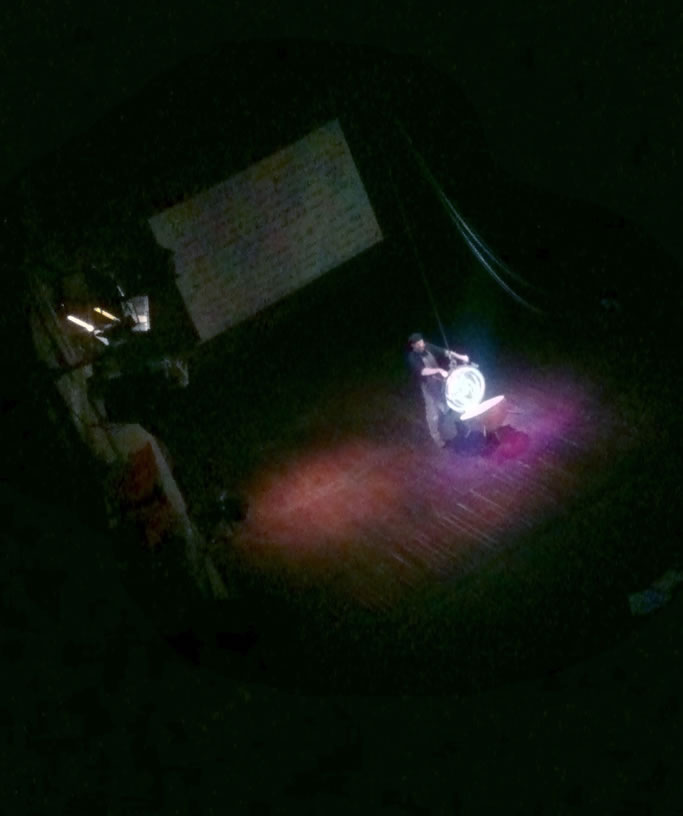

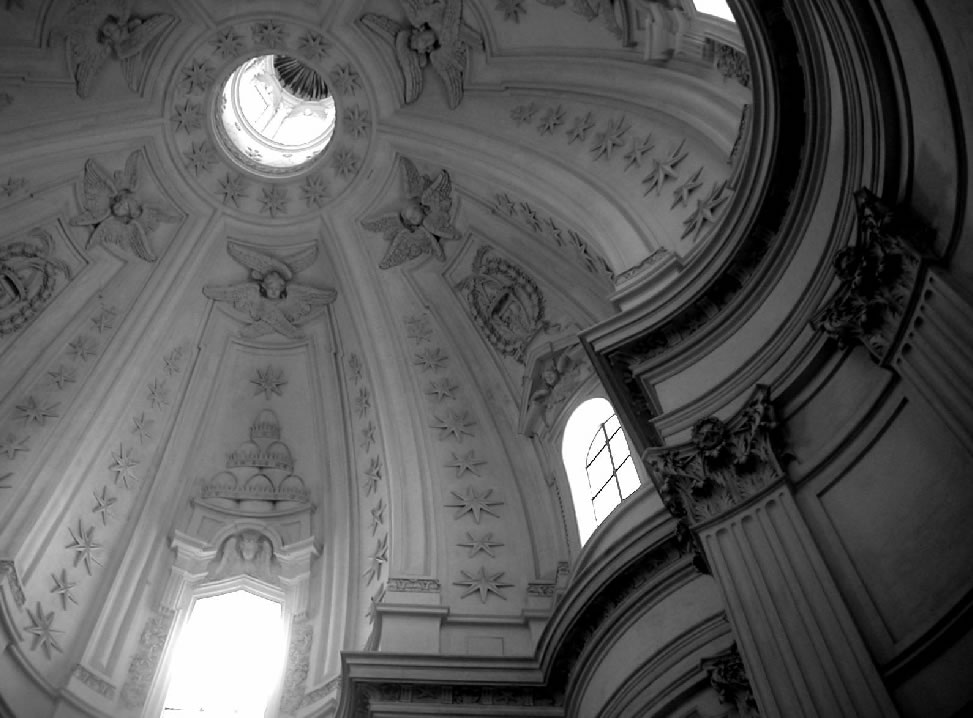


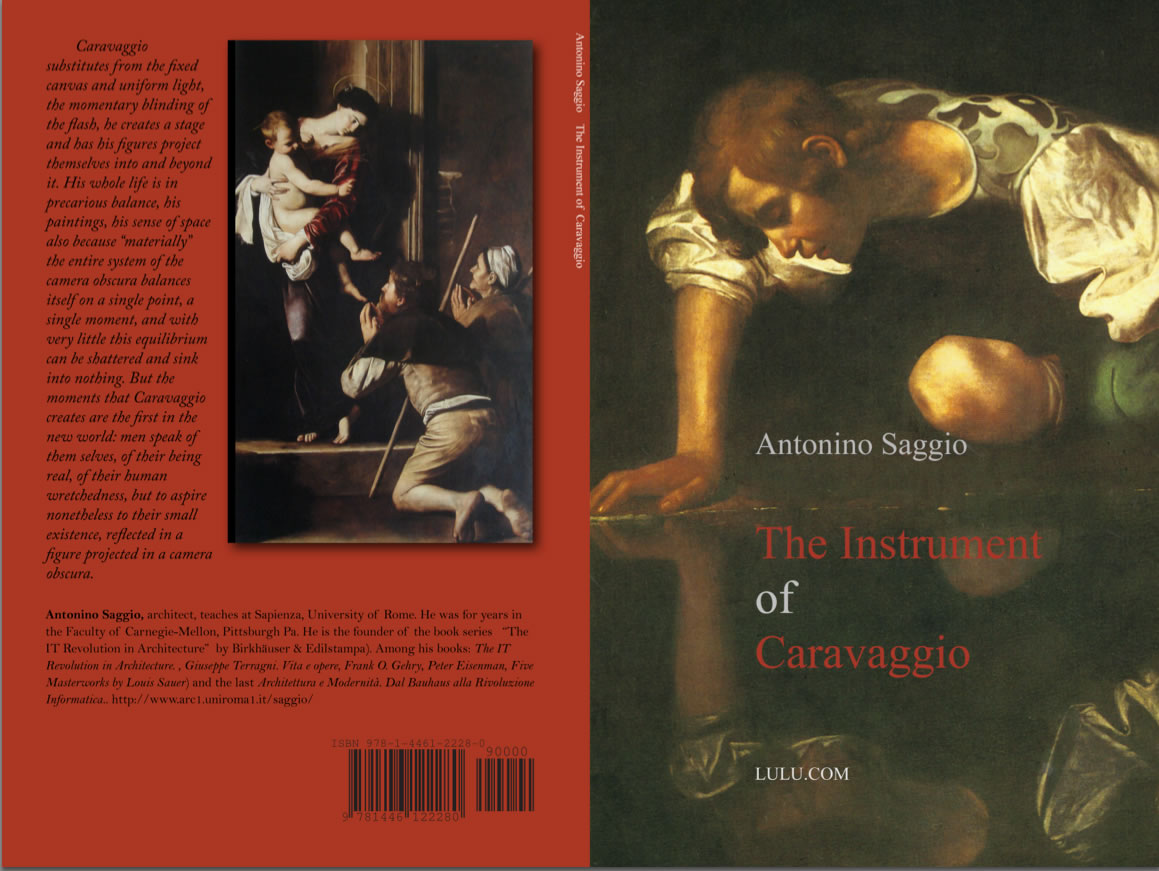
Available for download in Italian and in English
Francesco Borromini, S. Ivo alla Sapienza, (1643-1660) ; Caravaggio, Madonna di Loreto (1603-1606)
Saggio Sindrome on Borromini See movie >, Read articleIl Motivo di Sant'ivo > on Caravaggio read article 1 Il motivo di Caravaggio >, article 2 Lo strumento di Caravaggio >
5. Looking Inside

Steve (Jobs) looking inside a chip in 1976
refer also to James James Hockney "Secret Knowledge"
Thames and Hudson and to two serious AS's Sindromes Borromini >, video > Caravaggio >
Public quest
Where is my diploma as one of first 10,000 buyer as CMU grad student of my MAcintosh 128 K personally signed by Steve?
6. Time to Define Space
Time – A property created by God together with the universe (Saint Augustine).

1. The Extrusion process
2. The different sub systems
3 An experiment
4. Jump
The Key for us is NOT the modernist idea that "exists" an Objective Reality (objectively described in three dimension) to whic we add a forth dimension (time). But exactly the opposite idea. That Space and Time interchange their roles and presence at all dimensions.
Starting from teh zero dimension going up to further dimensions
"Time is a property Created by God together with the Universe" Saint Agustin (Sant'Agostino)
Magnificientt Universe >>>

7. What Is Space
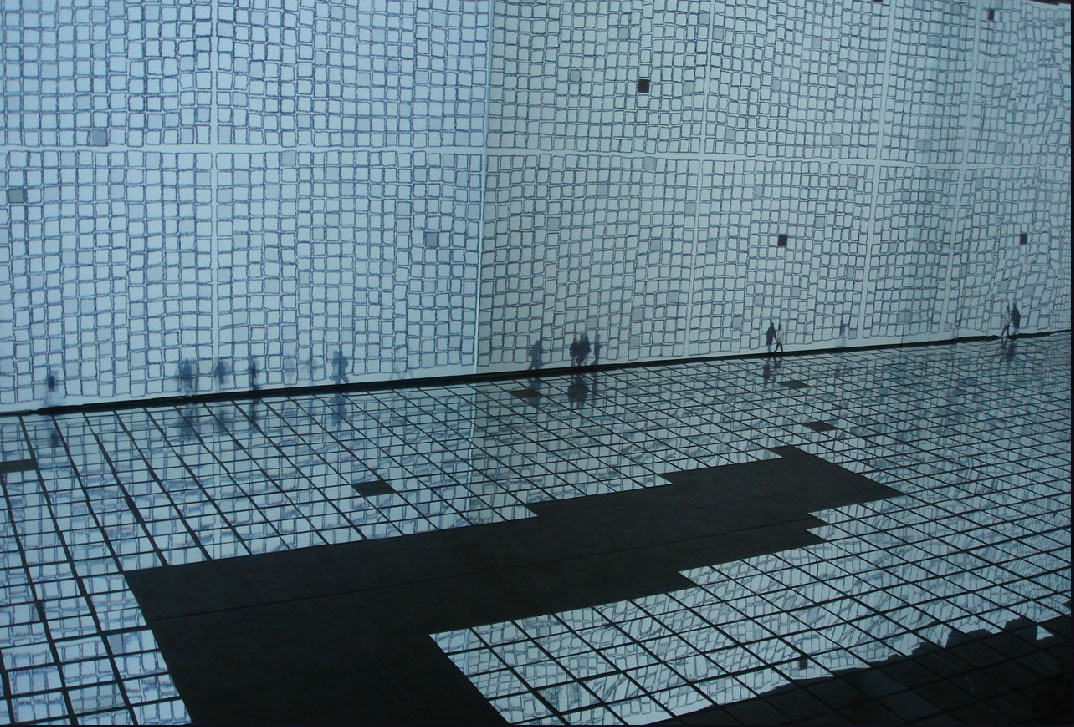
Choi, Won-Jung, "Why not here: murung dowan", 2006 >
8. Space as Information
Marcos Novak, Invisible space, Venice Biennale >
Does color really exists?
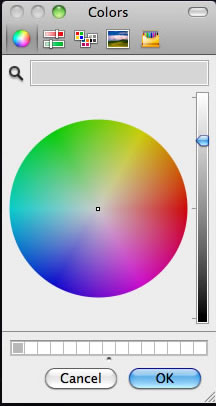
a. perception of colour. Psycology of perception
CONTEXTUAL
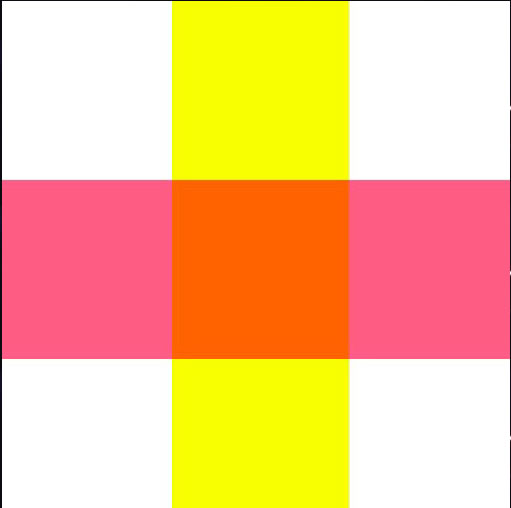
this refers also to transparency
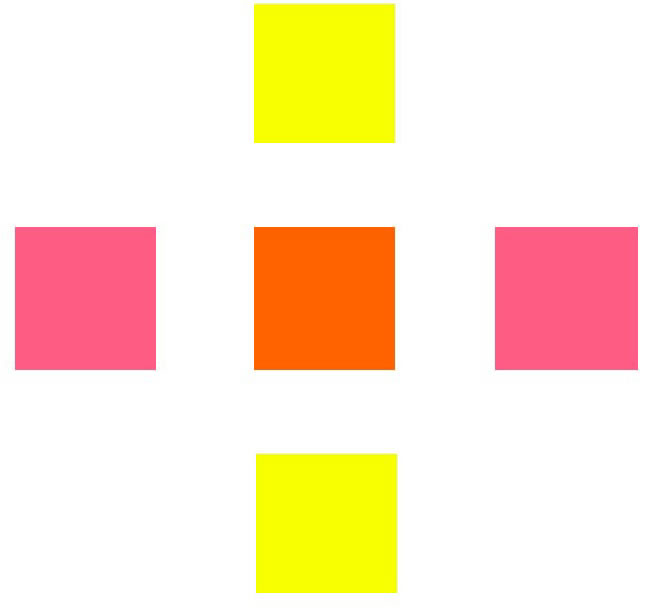
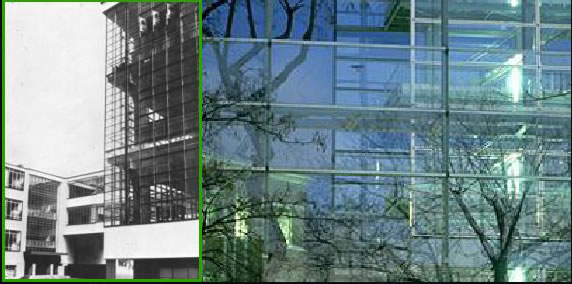
Walte Gropius Bauhaus, Dessau | Jean Nouvel, Cartier Foundation, Paris
2. Physiological

Picture by Andrew Davidhazy
3. Cognitive.
What colour is the ice?
What color is the sky?
To Italy
Who knows the land where the sky
of inexpressible blue colours itself? ....
Inexpressible blue!
All’Italia
Chi conosce la terra dove il cielo
d’indicibile azzurro si colora?
dove tranquillo il mar con l’onda sfiora
rovine del passato?
dove l’alloro eterno ed il cipresso
crescon superbi? dove il gran Torquato
cantò? dove anche adesso
ne la notte profonda
i canti suoi va ripetendo l’onda?
la terra ove dipinse Raffaello,
dove gli ultimi marmi
animò di Canova lo scalpello
e Byron rude martire ne’ carmi
dolore, amore effuse e imprecazione?
Italia, terra magica, gioconda
terra d’ispirazione!
Aleksandr Puskin
Now let's make a decisive step: but if the colour does not exist in reality and it exists only contextually, we should understand that the colour is one type of "information". True information!, as we have already defined that is: "application of a convention to one data". In this case the data is the electromagnetic radiation, while colour is nothing more than a psychological, physical and conventional use of information! Red wants to say stop, green go, but only in some contexts and some conventions.
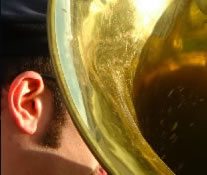
8. Space as Information
Now look at this picture
What about radio signals ?
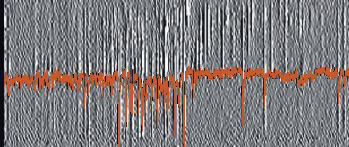
And air jet routes

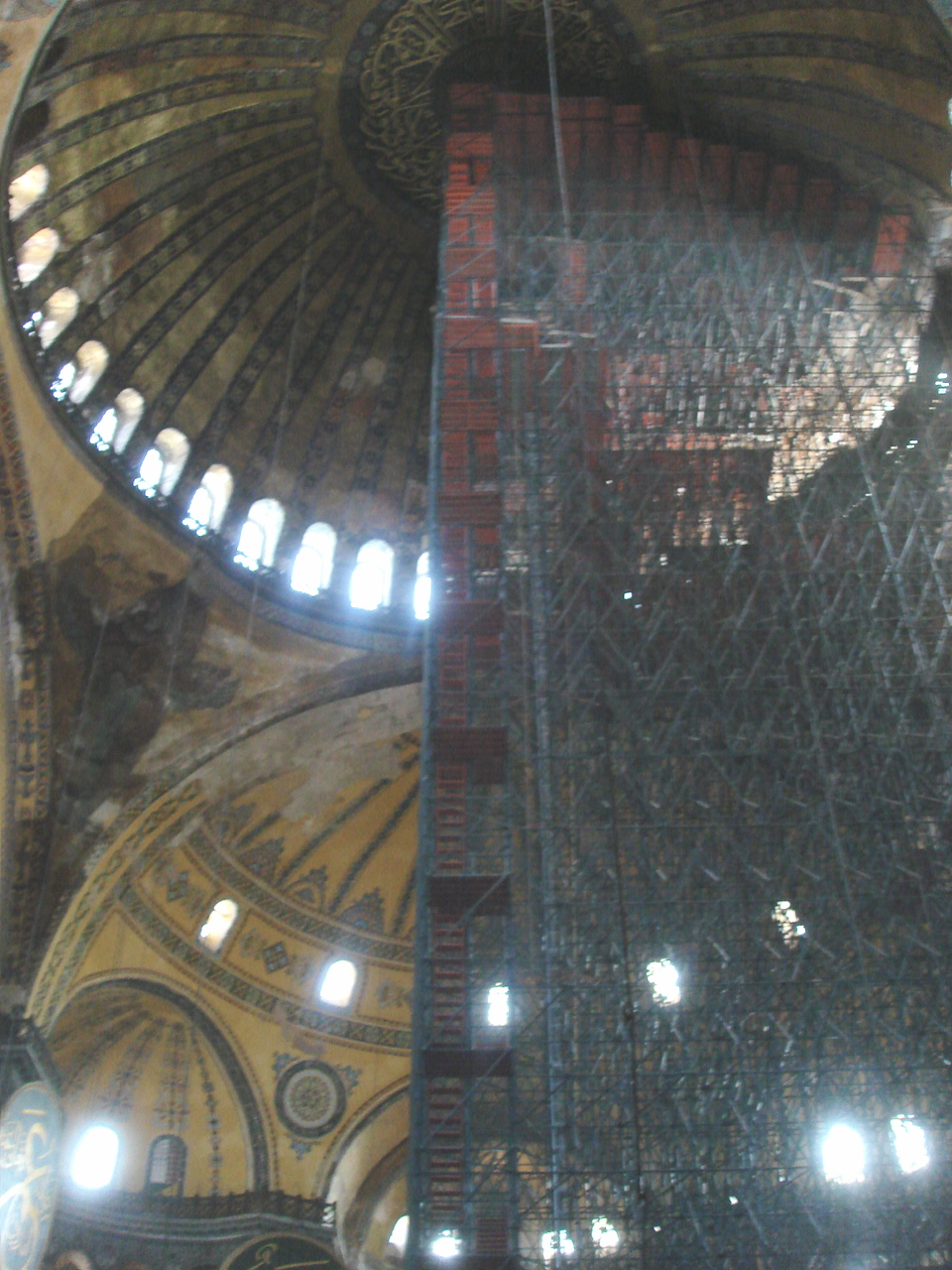
Santa Sofia
Space is information we can design and change its properties, values and characteristics, and we can also manipulate it to have some kind of projection of other dimensions
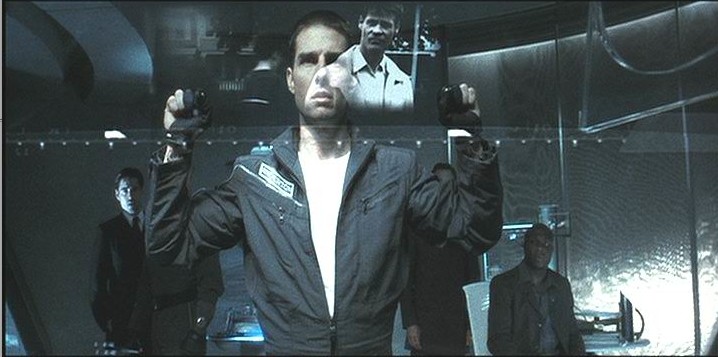
Steven Spilberg, Minority report
And today a reality
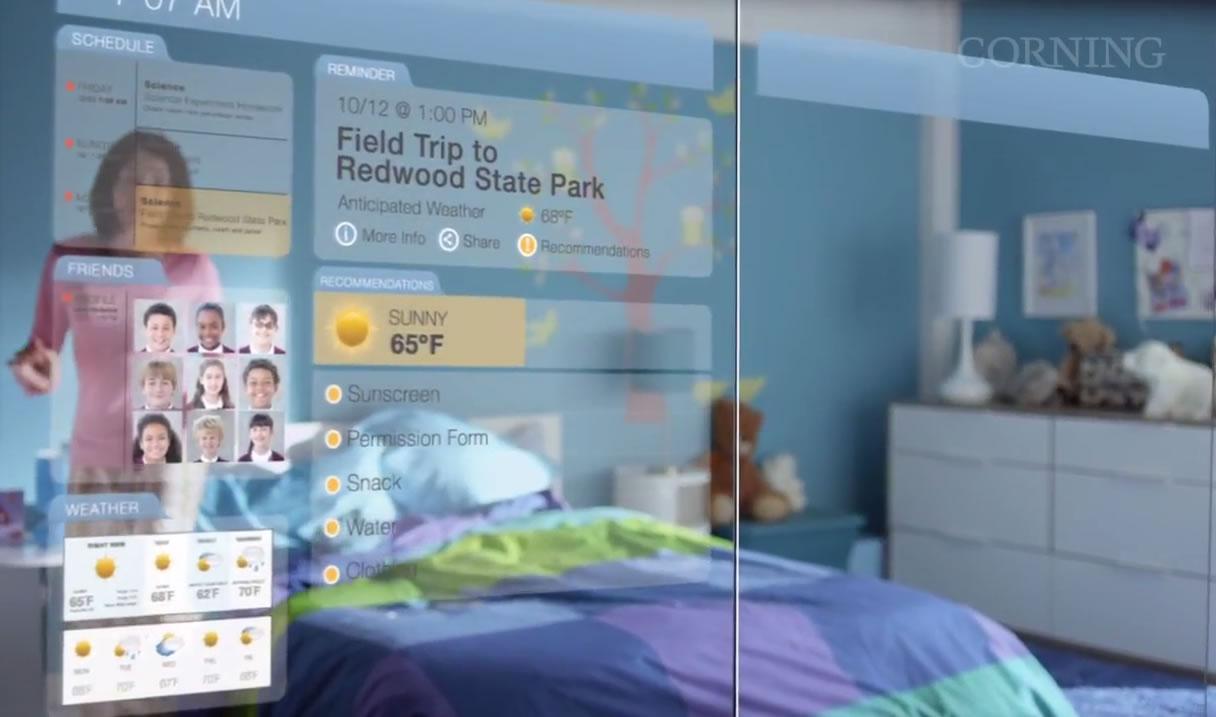
see developments on transparent glass and glasses
READY FOR ALL OF US
Look and Understand what Nicola Negroponte envisioned!
In 1984 !
It is "jsut" incredible:
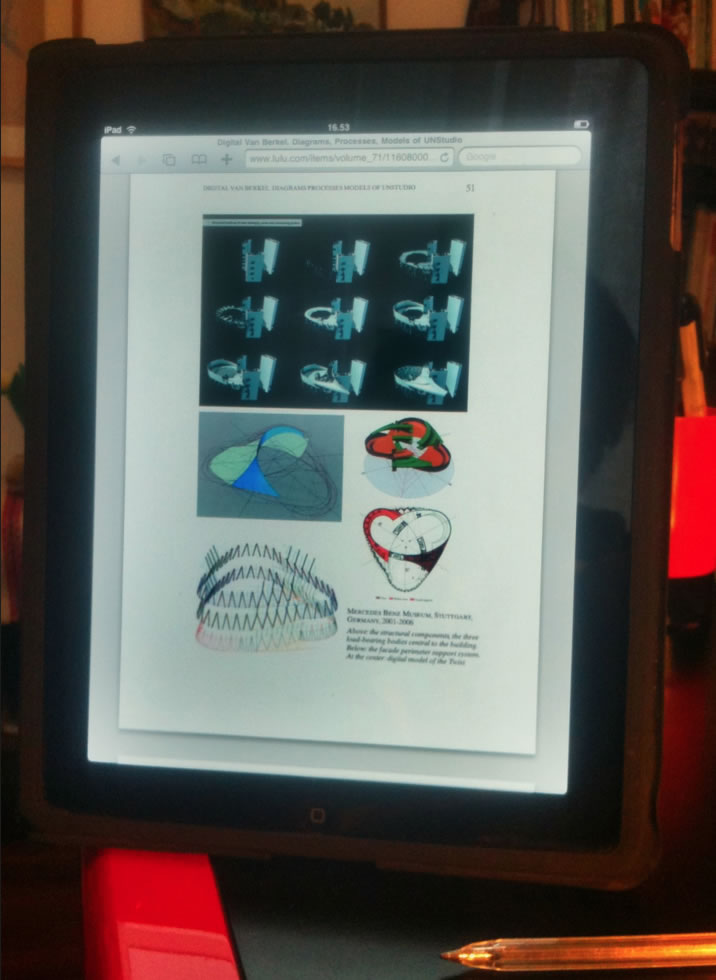
Gina
Arduino, another bottom up project

Finally space
And now we are ready to directly discuss the issue of space. Does space really exist? At this point in our discussion, the answer is obvious: it exists and it does not exist. Matter exists, not space. Space is absolutely dependent on the context and on the physical characteristics of the receiver. Perhaps the space that is known to a bat is "equal" to ours? A bat does not see but it sends sonorous waves like a radar. Is the space that the bat lives in like ours? Or it is effectively a different one?. Imagine a small worm that goes around our same room. The worm knows only two dimensions because it just "strips" (slivers?). Is it's space equal to the space that we see from our third dimension? And naturally let's think of fish that only live in aquatic space. How can they conceive, from the depths of the sea, the notion of mountains elevated so high to the point of snowfall?
In summary, if with Copernico we have understood that the earth is not at all the center of the universe, even though it appears to be our our point of view,, it must also be understood that the three dimensions that men experience are NOT the center of anything. We do not live at all in a kind of three-dimensional bubble in which everything is located and that we and our bodies watch and control. On the contrary, other spaces exist- other informative worlds! They are a series of parallel worlds that coexist although there are some channels, some passages, some small openings and some "projections" between these various worlds.
However, also the man when is put in a different conditions "sees" and experience space in completely different way. Lately I have spoken with the Italian astronaut, the colonel Roberto Vittori. Vittori describes space in the conditions of microgravity as completely different from the space we are accustomed to. A space in which one floats is a radically different one: it is a space full of possibility and of gorges and above all it is a space to be used physically and therefore cognitively differently.
For this reason I refer as a key image of this text (fig. 0) the Church of Saint Sofia in Istanbul. One can see in the image the large room under the main cupola as it was designed in half of the picture and in the remaining half occupied by an enormous scaffolding. The scaffolding can be read as an enormous matrix. In this case the matrix is physical, but imagine it as a virtual and electronic one. Sensors can in fact describe the points of the matrix-scaffolding and, activating these hidden but existing points of the space, various information can be placed (as Tom Cruise made Minority report). Imagine being able to experience (?) space floating like an astronaut. Or think, more simply, how space is experienced by a pigeon that enters that basilica and knows the gorges, the hidden places. It should be clear that space is a space-information absolutely dependent on the contextual, physical and cognitive principles we described above. Space exists only in the measure in which these three levels are effectively practicable by the receiver.
As Einstein wrote - (2) the most sensitive thing to say something about space it is time (I don't understand this sentence) (the most sensitive topic is that of space and time?)(and on this aspect much we have constructed). Einstein refers to physics, if we must approach space from our human point of view and to dare to add something to the concept of space, it is that "space is information'. Among other things space changes continuously and it is, even literally, " in formation".
Space does not exist as such. It is the application of a convention to the data of the matter. On the other side, the historical and scientific mutations of the concepts of space on which in other occasions we have written, is further evidence of the same argument (3).
Here we would like stop ourselves because it seems to us to have reached the point. It follows some obvious consequence for the architects who are interested in the research of Information technology. If the information is the raw material of this historical phase, and if the space itself is information, how can one design this new conscience? The first aspect of the answer is: "increasing its cognitive and contextual" characteristic. As we know, technology can be used like as a tool to augment reality. How can one design to render a way to perceive dimensions that are beyond our normal 3 dimensions and our limits?. The entire history of technology points in this direction with the artificial prosthesis that creates and expands our cognition and physical limits. As it is known, in the last physical elaborations of micro particles and in new molecular reactors, time goes backwords, but also the Internet is an incredible prosthesis, i.e. an incredible example of amplification to cognitive and experiential knowledge. The future development of architecture will be part of this process. The prostheses most powerful today, from the Internet to the nano technologies that concurs with the materials to the change of colour, density, characteristics go in this direction. And then, as always, there is the great topic of the interactivity and of the dynamic interconnections to which we often return and to which we have briefly fore mentioned.. The interactivity of architecture, is the natural catalyst because if space is information it most also hold true that with the exact dynamics of interconnections of electronics this consciousness may move far beyond our presently known dimensions and limits.
(from A.S. The IT Revolution in Architecture, Thoughts on a Paradigm Shift, 2008 >)
9. Crisis Modernity and Information Technology: Course 5th year @ La Sapienza - Saggio
Special Session Organiser: Prof. Antonino Saggio, La Sapienza University, Italy
One possible definition of Modernity relates it to the concept of Crisis. Thinking along these lines, “Modernity is the effort to answer to crisis and in so doing urges and promotes the necessity of new Aesthetics”
I am putting in words a way of thinking that has different master thinkers, but that motivated the theoretical effort that is behind “IT Revolution in Architecture”. For Crisis, I intend the historical process of transformation from the Industrial Paradigm to an Informational one; for Modernity I intend the positive effort to address the crisis in front of us putting at the center Information Technology, not because we like it but because IT is the propellant of our times. The results bring “Revolutionary” aspects in considering the historical magnitude of the shifts in front of us.
Now, this special session of the conference on Intelligent Environments called “Crisis Modernity and Information Technology” is looking specifically for contributions that address the just described crucial relationships.
In other words, the stress of the papers should be put (a) “In a situation of crisis” (pollution, poverty, emergence for disasters, risks of different nature and sorts, atmospheric or land situation etceteras) and (b) in addressing the crisis situation with an intelligent and creative use of Information Technology.
The case studies and projects can be at a very large territorial scale or at minimum scale of object design. The issue to establish in the paper is how Information Technology is crucial in addressing and solving the issue.
IT has not to be only a toy for the houses of the richest but a crucial tool in the growth of humanity. Right? >>
Crisis
Examples from Antonino Saggio Chair at La Sapienza University Rone >
Saggio Course 06 Arrows >
Stefano Aiello - Joana Martins - Marta Moccia - Valentina Pennacchi - Luigi Viapiano
Saggio Course 09 Final work of Modernity, Crisis and IT
Crilo
LABES
il teatro nella stratificazione archeologica
cristian farinella - lorena greco
L'interattività nel teatro viene vissuta come momento di supporto all'interno della rappresentazione scenica,in chiave semantica e non puramente "tecnologica".La ricerca condotta,sviluppa tematiche legate all'uso della tecnologia per rendere possibili spettacoli all'interno di un contesto morfologico fortemente stratificato e attraverso di esso trovare un motore economico per lo sviluppo di un progetto di scavo e di riuso di un mondo sommerso e altrimenti inaccessibile che è quello dell'archeologia a Roma.
http://crilo.altervista.org/corso%20caad/labes.htm
10. Works: Thesis Projects Research Projects @ La Sapienza - Saggio
Watch and study this volume here on line Link local link >
ANTONINO DI RAIMO
Advisor A. Saggio
Flux Greece, Danza e Architettura >>
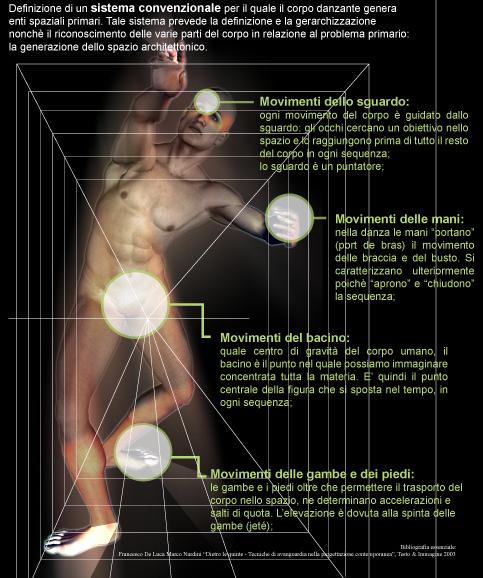
Go to Feidad version and Prize
Urban Green Line
A proposal of Saggio's chair for the city of Rome
Go to Shiraz lecture On Urban Green Line, With audio
The mystery of Vie Cave
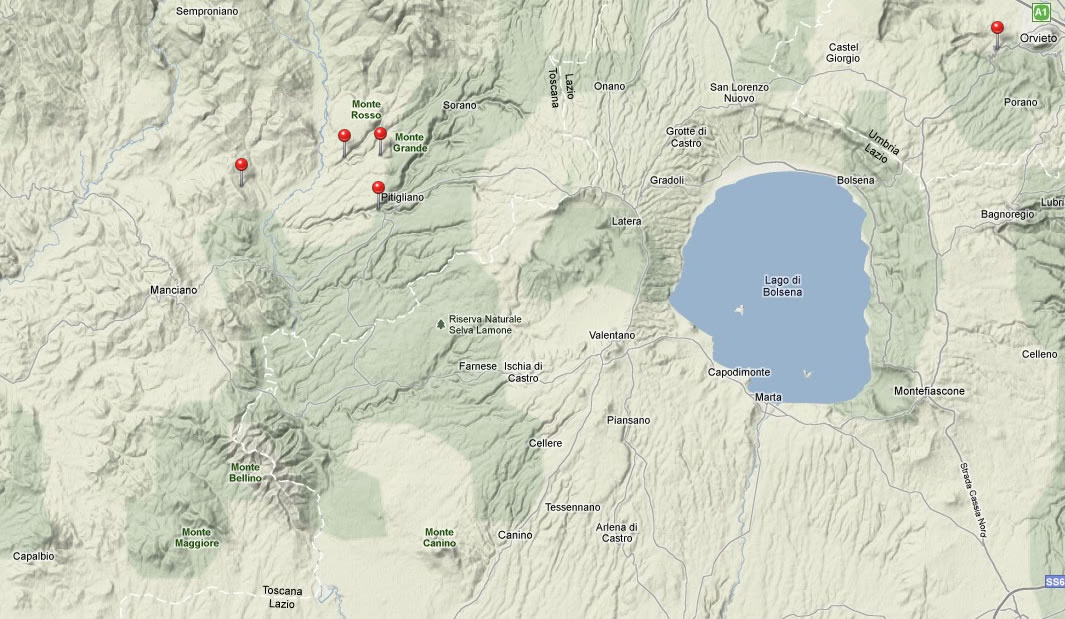
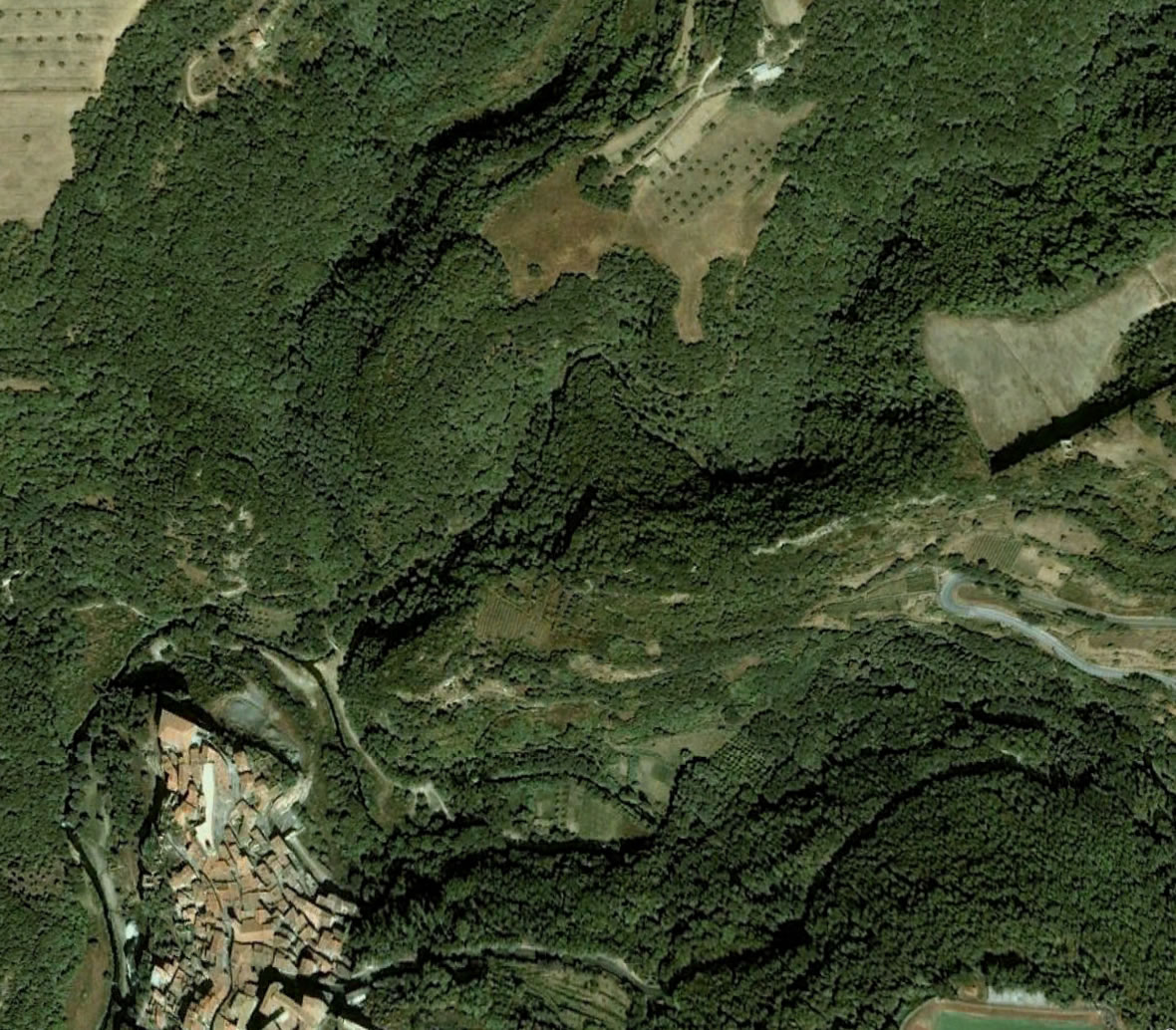
Sorana, Vie Cave Location Map Source is
Giovanni Feo, Le vie Cave Erusche, Laurium, Pitigliano 2007
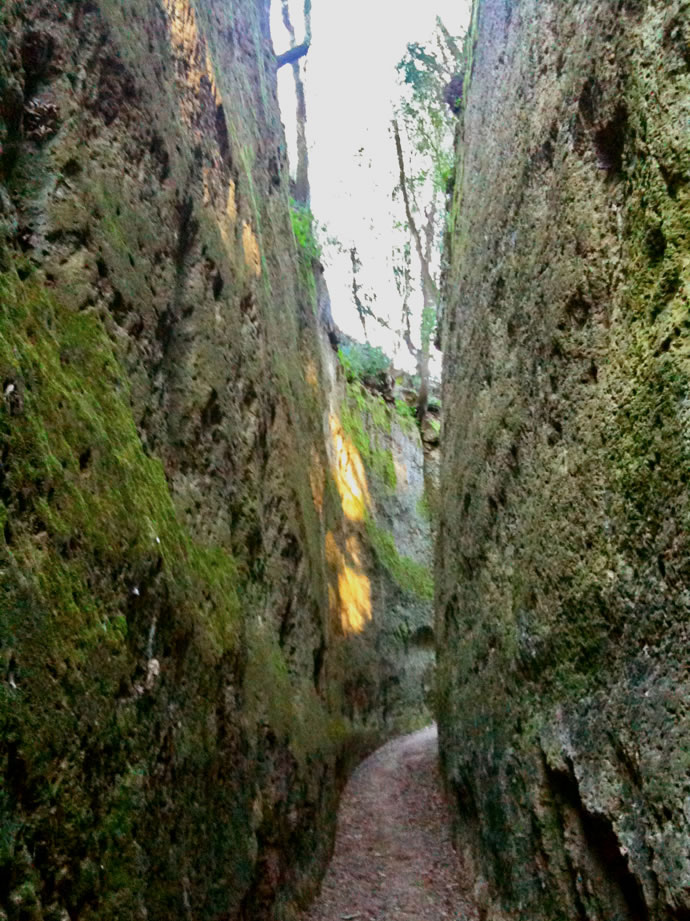
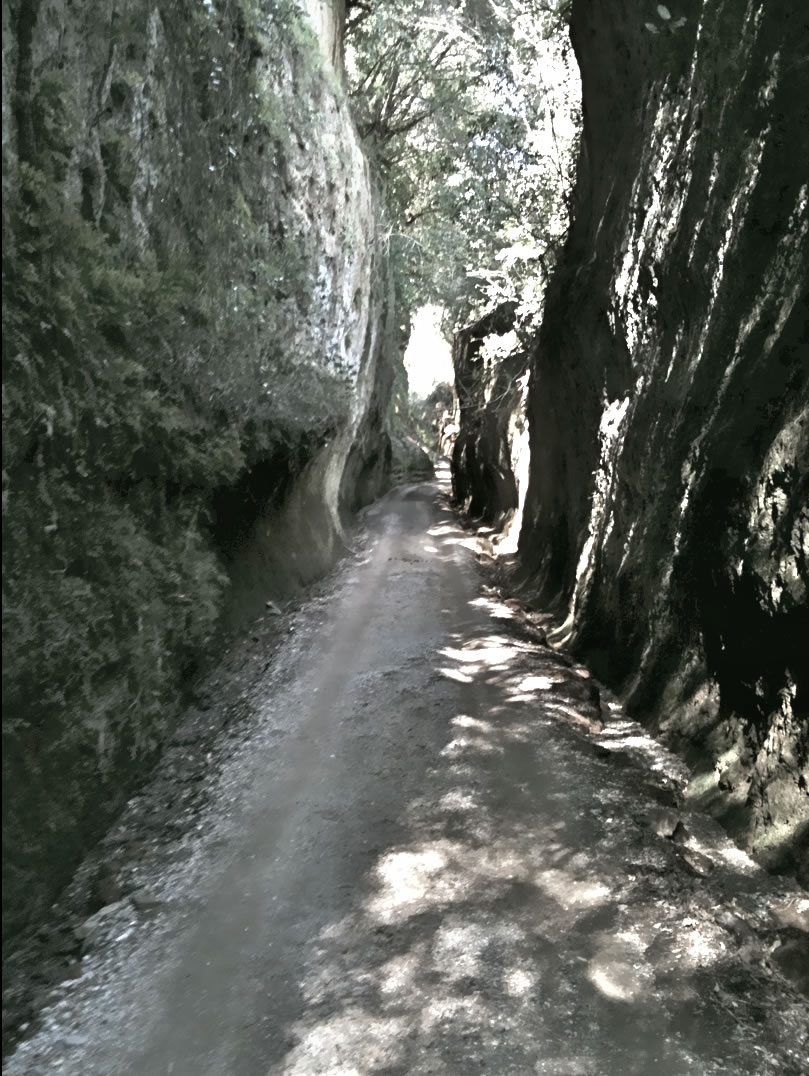
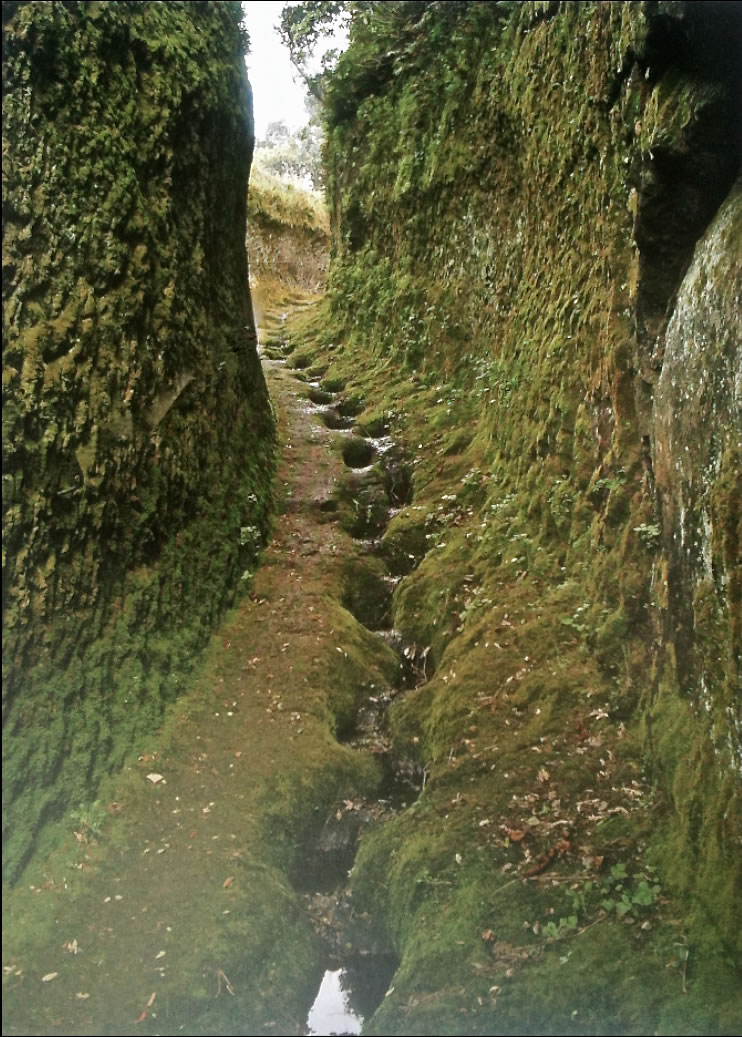 ..
..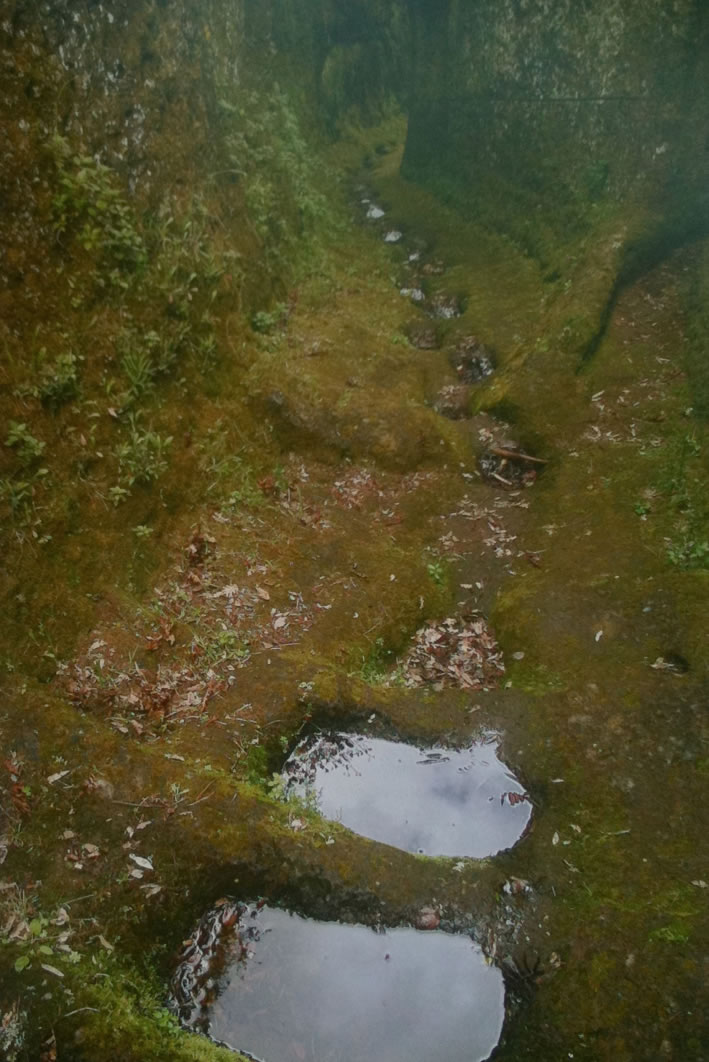
Nel Mondo etrusco esiste una complessa strategia dello scavo, una strategia combinata e coordinata che va dalla Tomba Rupeste, ai Dronos, alle Vie Cave, ai solchi "dei carri": Questa processione di scavi è anche quella che accompagna i morti alla sepoltura e allo stesso tempo celebra il percorso dell'Acqua (I morti devono avere acqua per vivere ed ecco una delle ragioni della presenza continua delle coppelle.). Le vie cave sono state completamente tralasciate dall'Archeologia ufficiale per almeno tre ordini di motivi (perchè etrusche, perchè non "oggetti" e soprattutto perchè inspiegabili senza un approccio sistemico ecologico. Strade per l'archeologia ufficiale, sono invece parte integrante di un sistema di celebrazione del culto della terra.
Antonino Saggio
go to Shiraz lecture On Urban Green Line, With audio
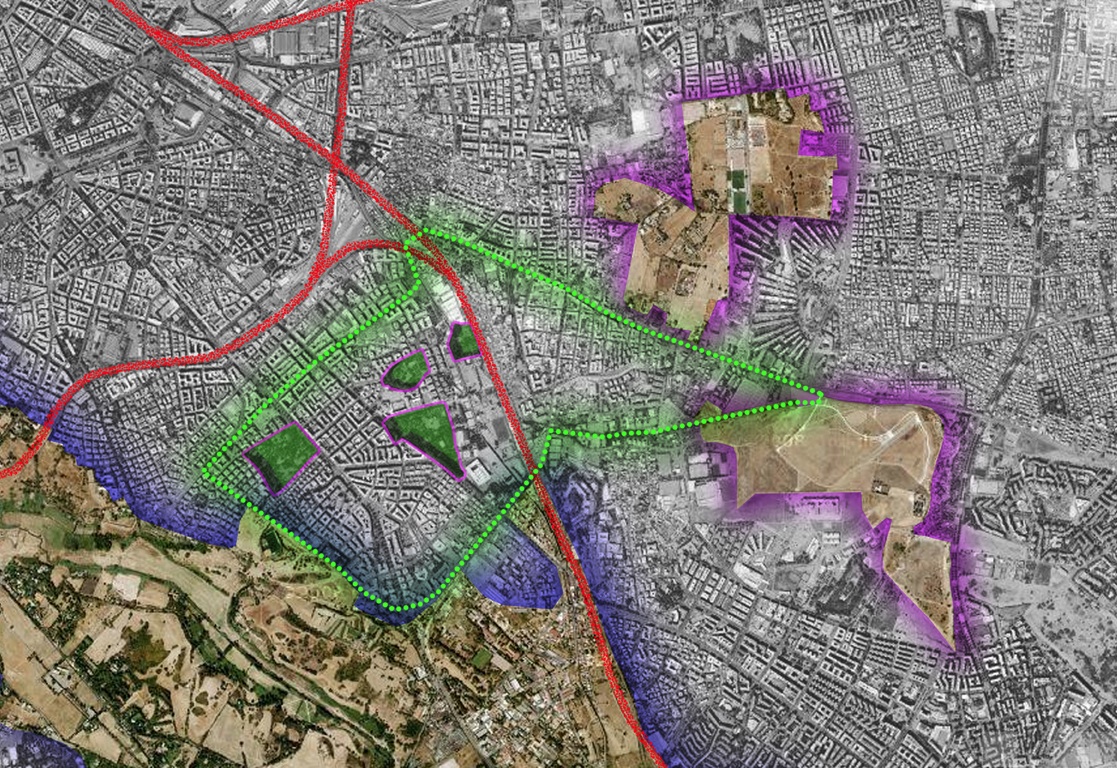
5. Urban Green Line an Ecological Infrastracture
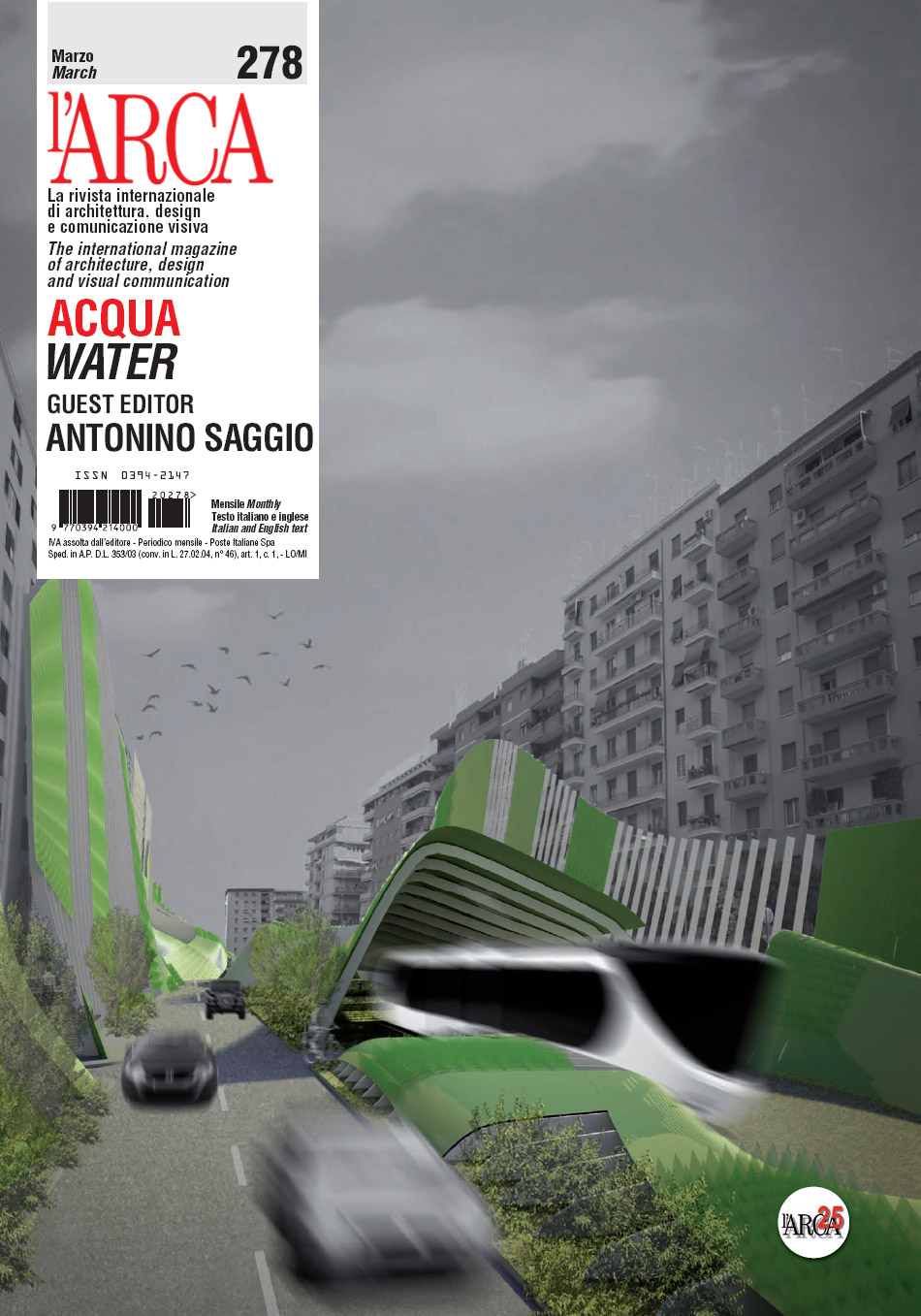
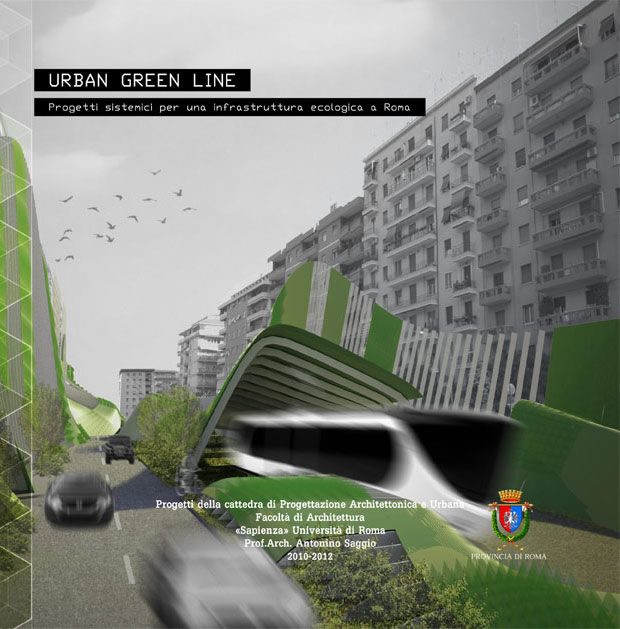
ePub 2,99, In black&white 8,90 or in color 28,50
1. MultiFunctionality
(come le mura, mica sono solo difensive, una "pluralità di funzioni" vi devono ricadere, innanzitutto quello della mobilità)
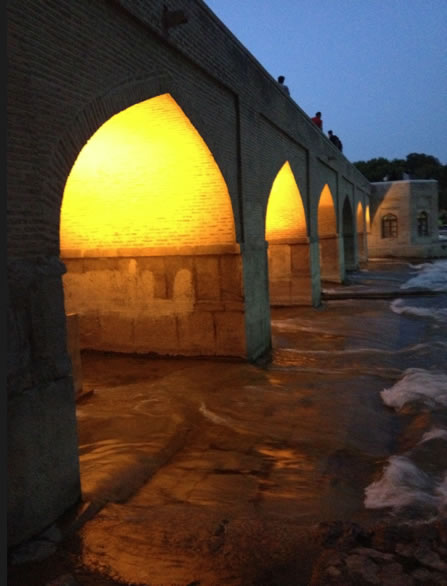
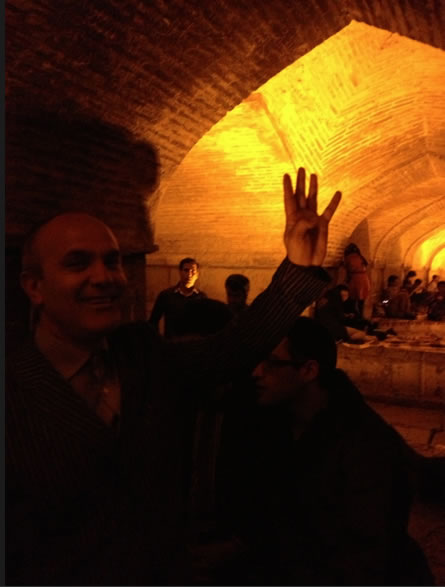
2. Systematic Green
(è il concetto di ecologico in quanto sistema attivo, capace di innestare "cicli" e processi, maratonda >)
3. Information Technology Foam
(l'idea che oggi dell'informatica non si può fare a meno, e che anzi è spesso catalizzante es 2009, es 2007, es 2006)
4. Living Accessibility
(è l'idea che per vivere bisogna rendere accessibili sistemi urbani e ambienti diversi della città, insieme al senso del viaggio)
5. Magic Crisis
(è la chiave di volta, bisogna andare sul difficile è solo li che si apre veramente la modernità, anche nella sua componente più complessa e antica)
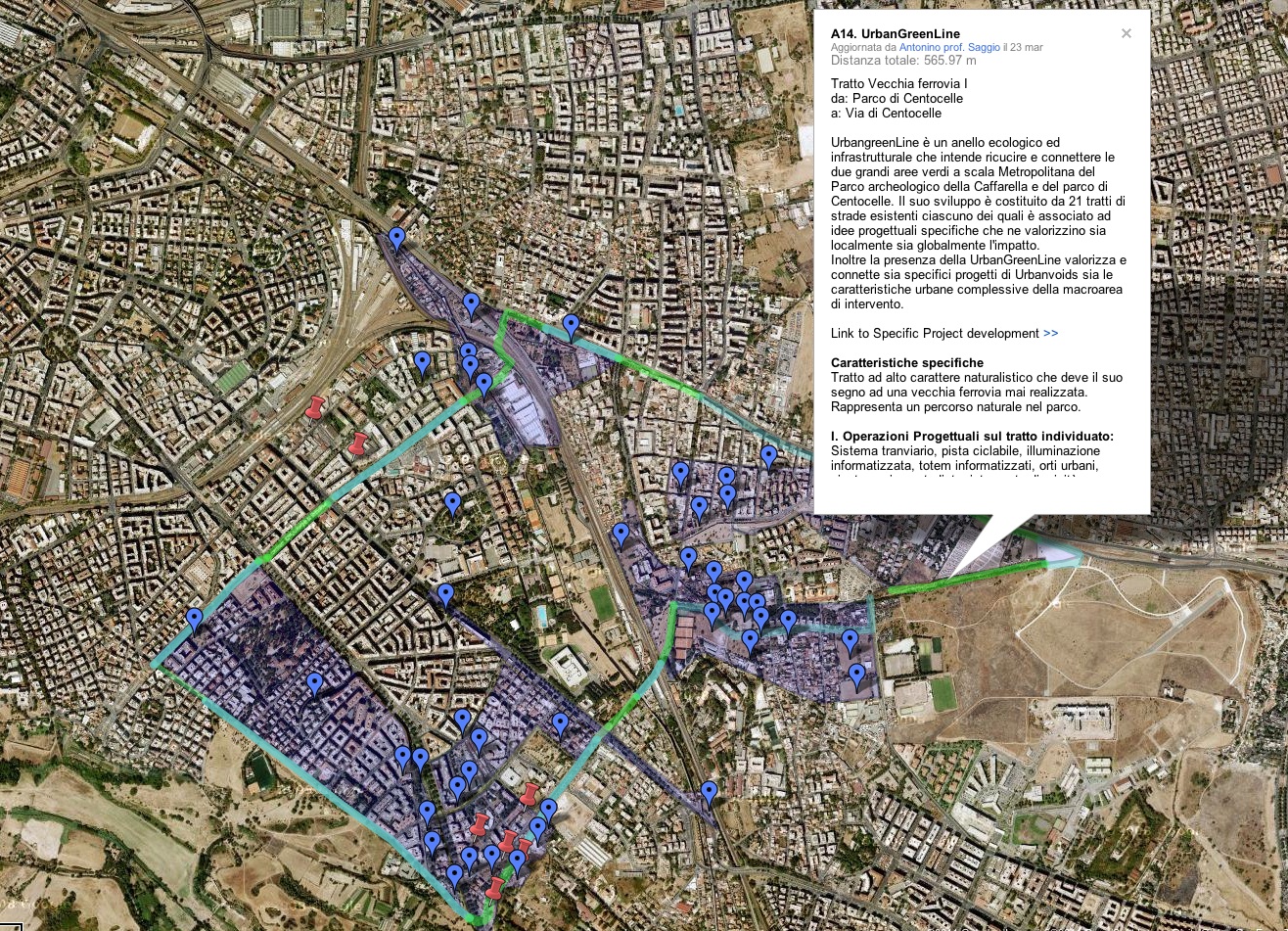
VAlerio Galeone Dario Pompei
Tram as Oxygen Dispenser
IT CAAD 2011 Course Prof. Saggio
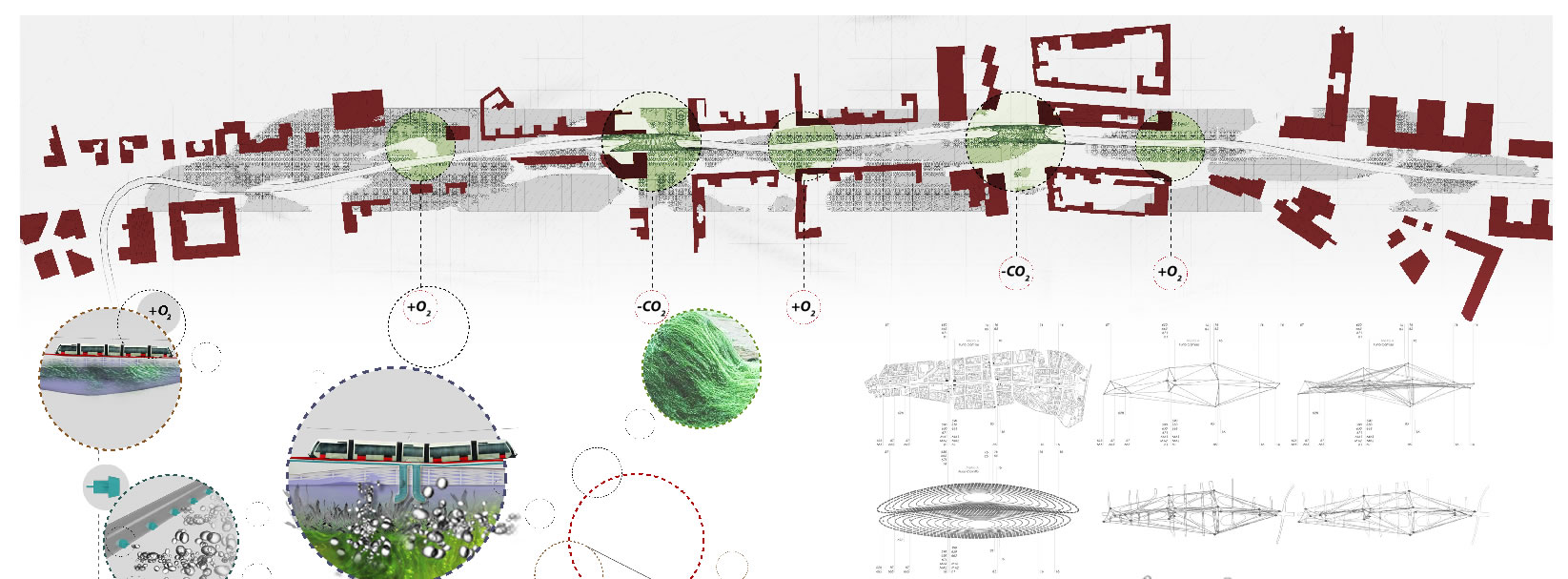
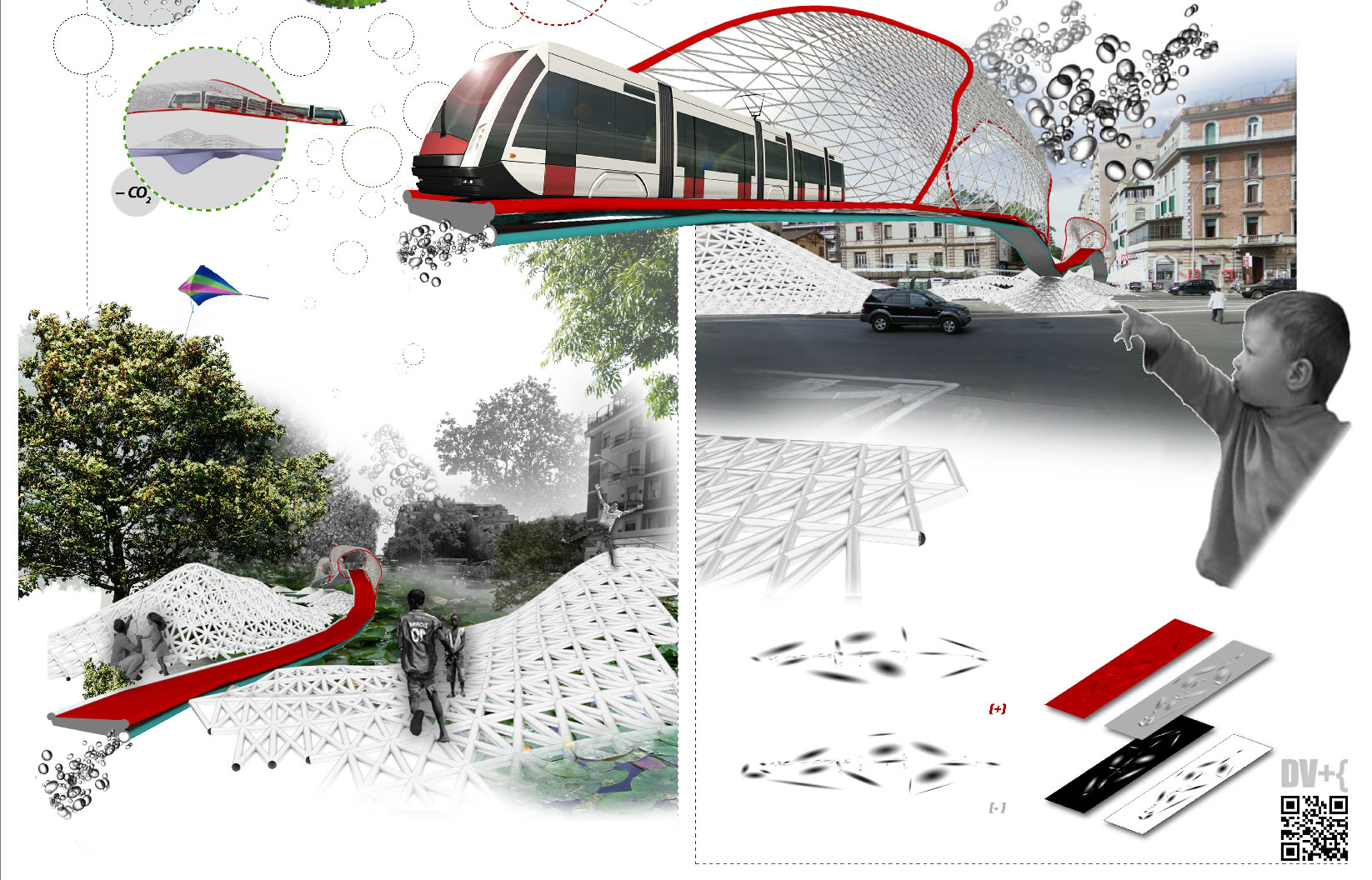
Graduation Thesis/Tesi di Laurea
RE-HUB
Rete di spazi per la didattica e lo smistamento dei rifiuti urbani /
A SpaceNetwork for the and Education and Sorting of Urban Trash
Saverio Massaro
AA 12-13 Graduation Thesis Sapienza U. of Rome
Advisor Antonino Saggio
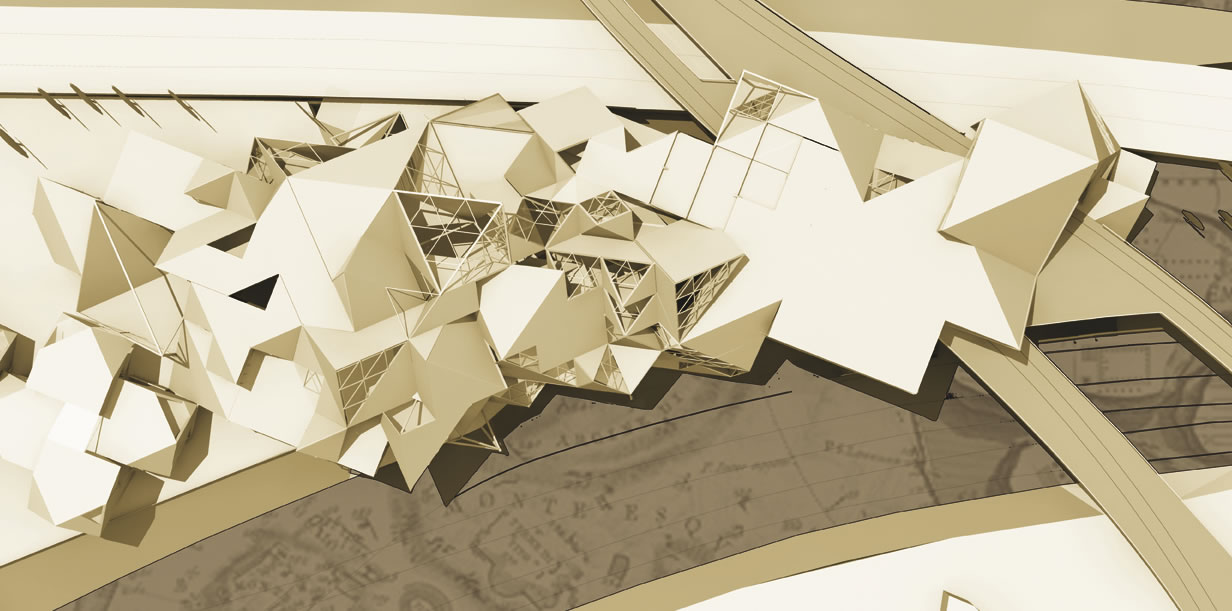
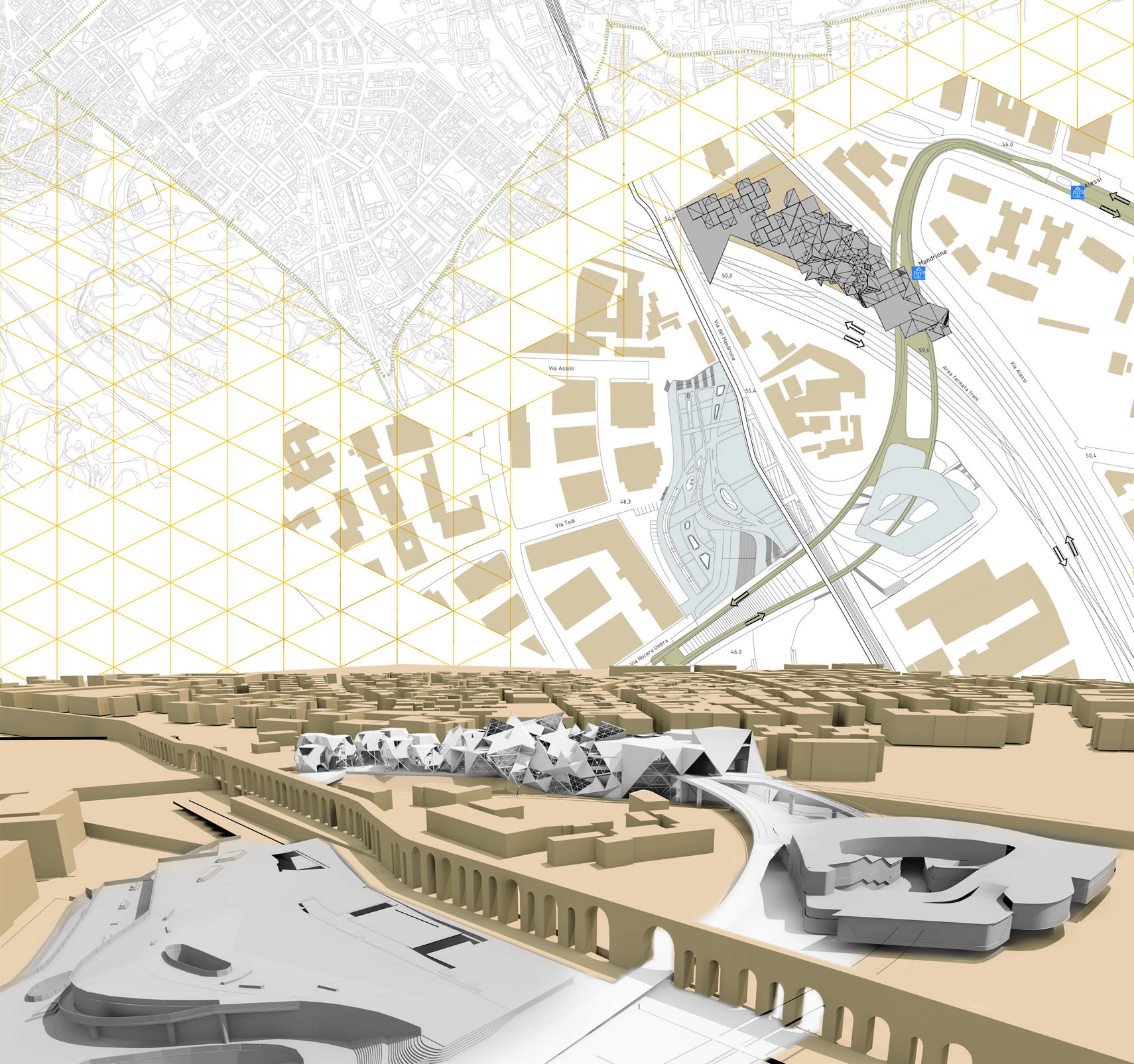
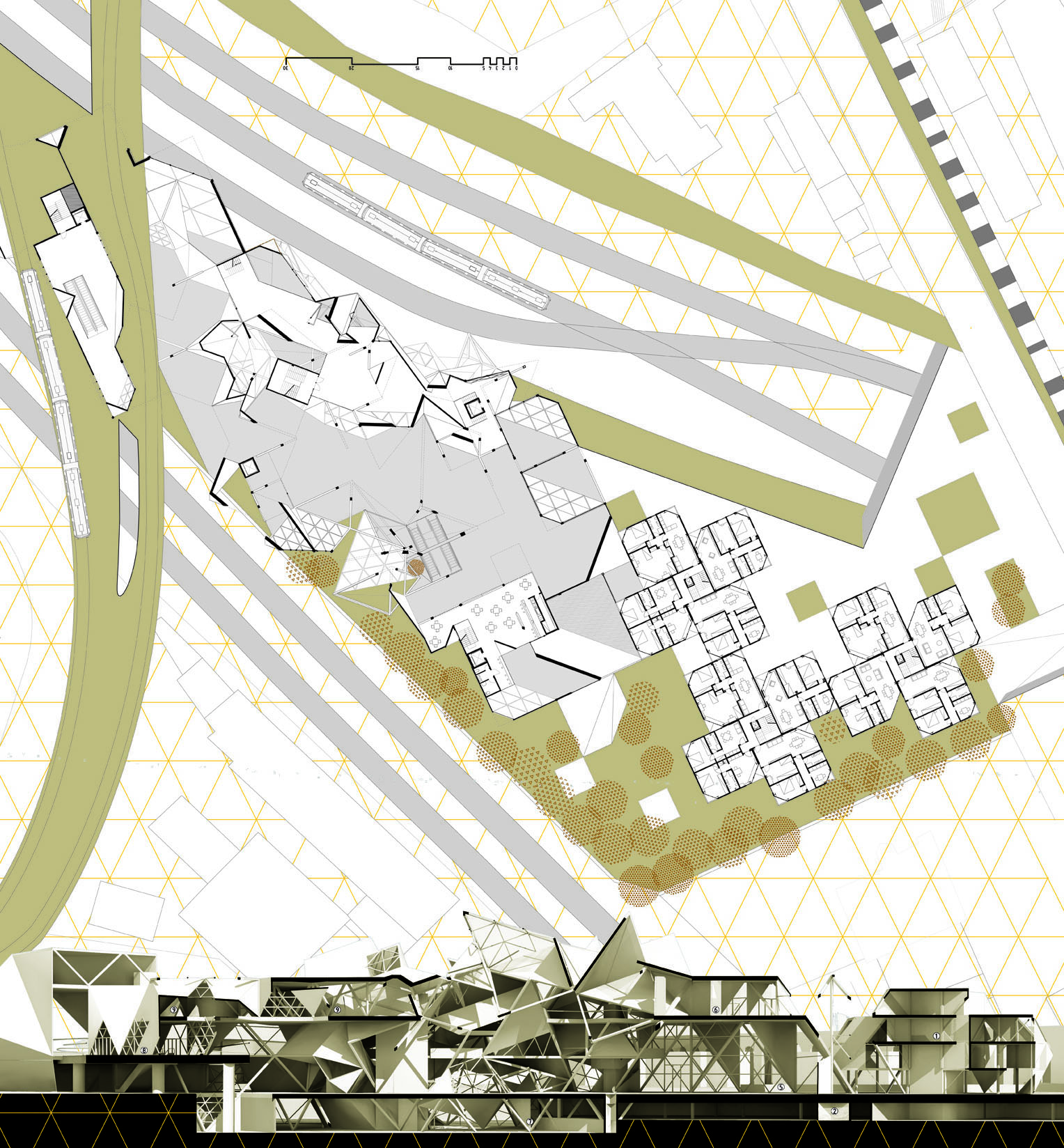
10. Works: NitroSaggio
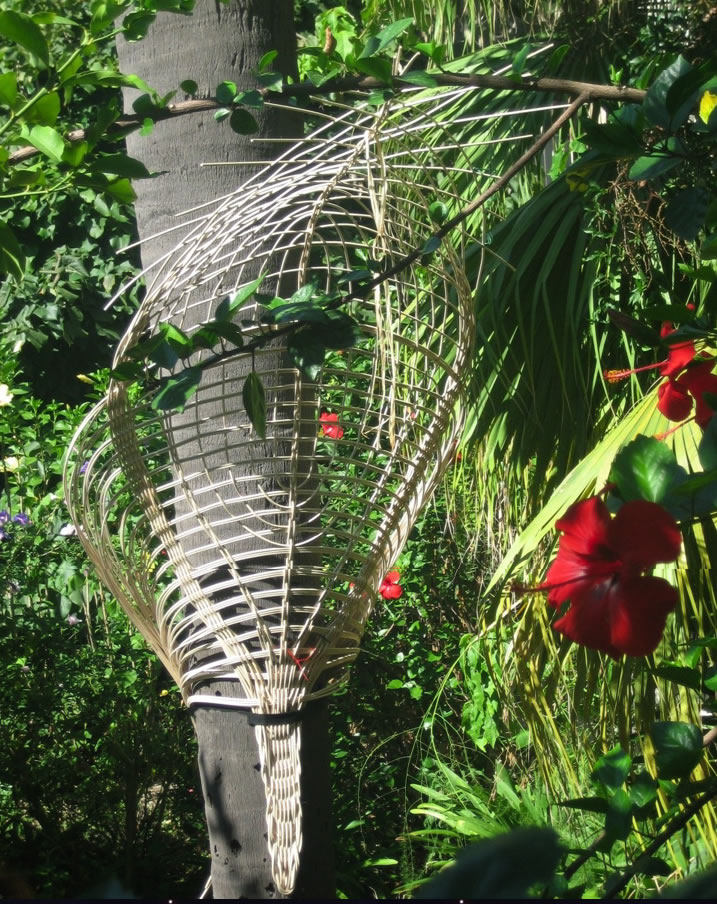
ROSETTA ANGELINI, ALFREDO PRINCIPIA, ALDO MAMUCCARI, LORENZO MASTROIANNI, ALESSANDRO MAZZA, EMANUELTE TARDUCCI nITrosaggio
“Electronic Palm”

Gallery "Come Se" Rome
Places for events, exhibits installations in Architecture and the Arts
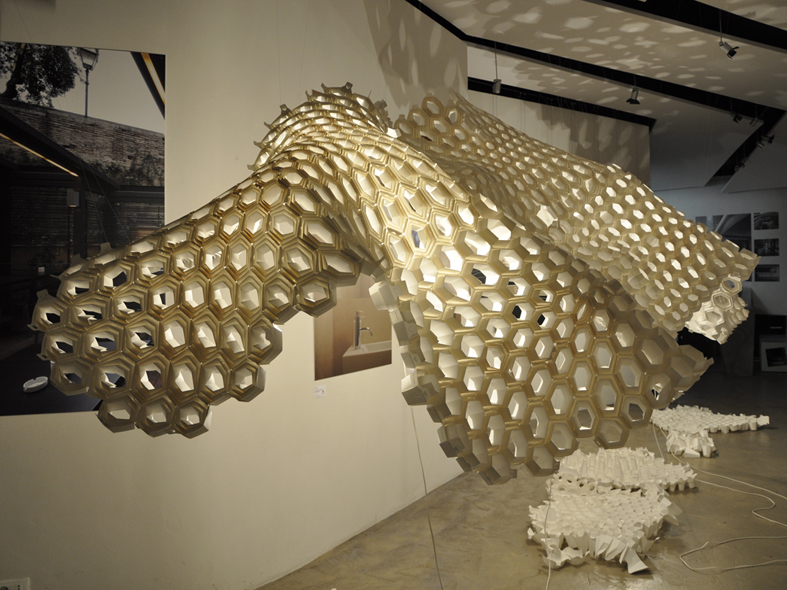
______________
Architectural Design
Galleria di Architetura "come se", Roma
Architect Rosetta Angelini
nITroSaggio.net
Antonino Saggio
Scientific Advisor
___________
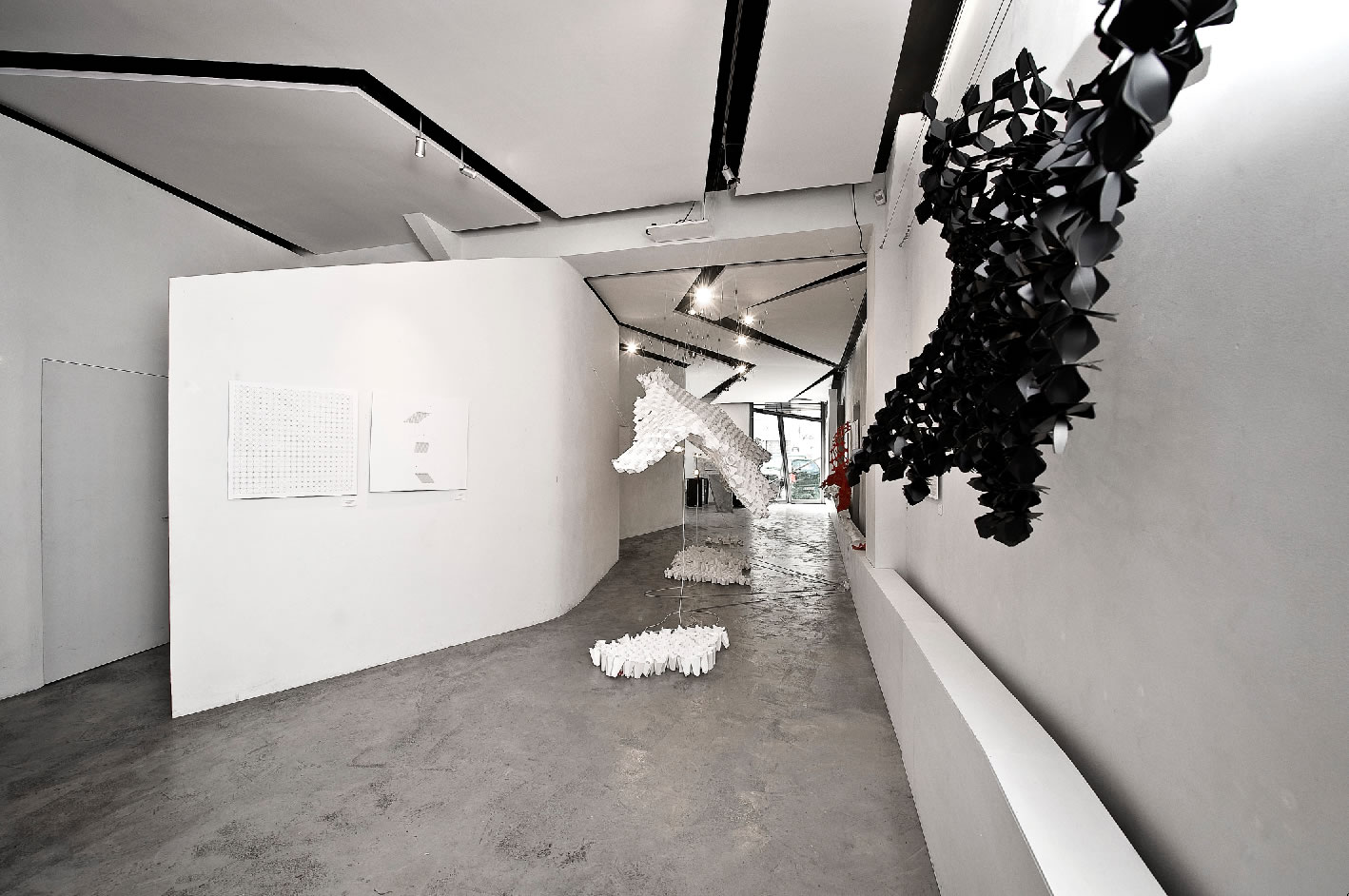
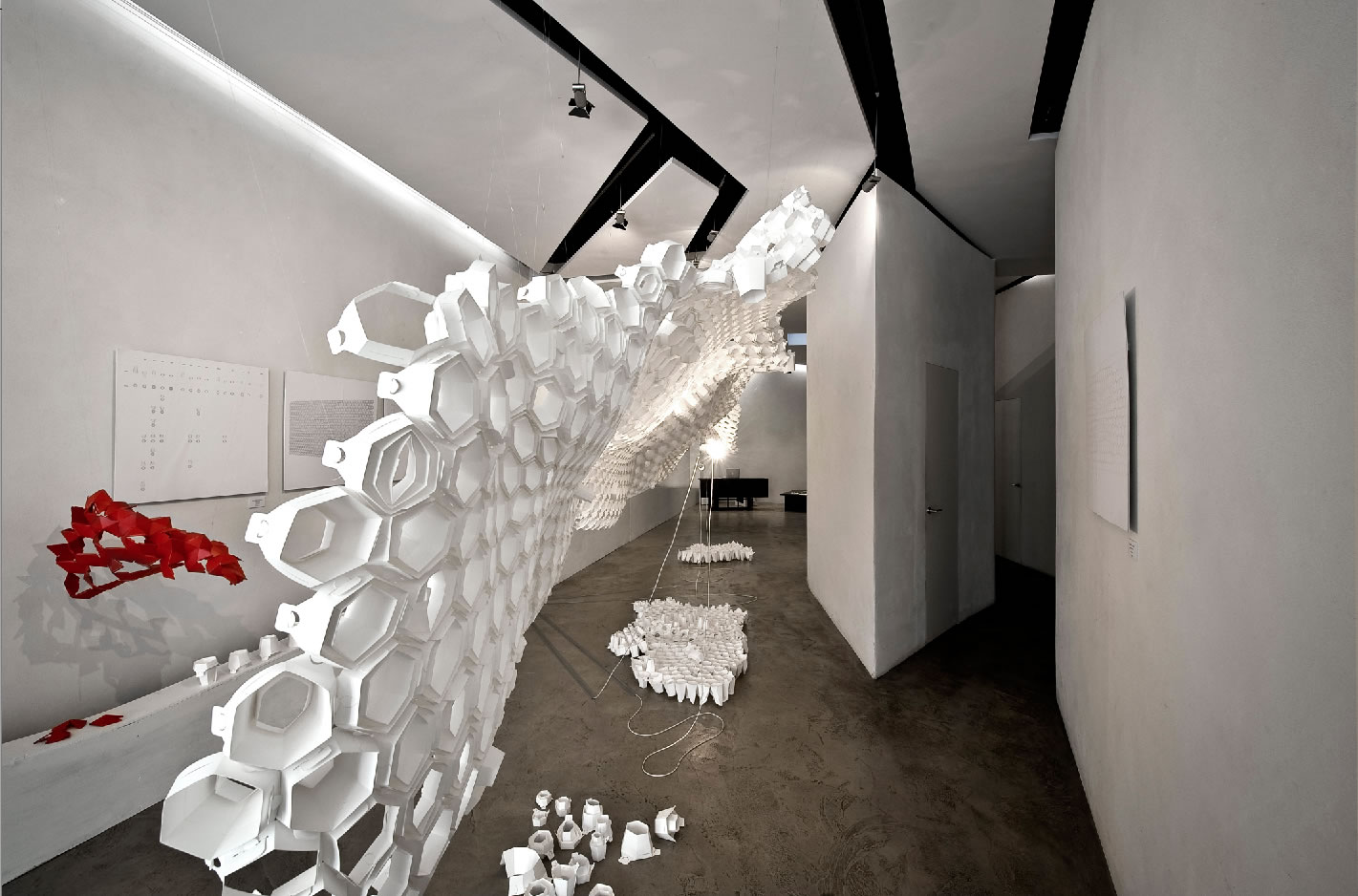
Gernot Riehter Exhibit
______________
Architectural Design
Galleria di Civico Zero Center for young Immigrants , Roma
Architect Rosetta Angelini, collab. L. Greco C. Farinella
nITroSaggio.net
___________
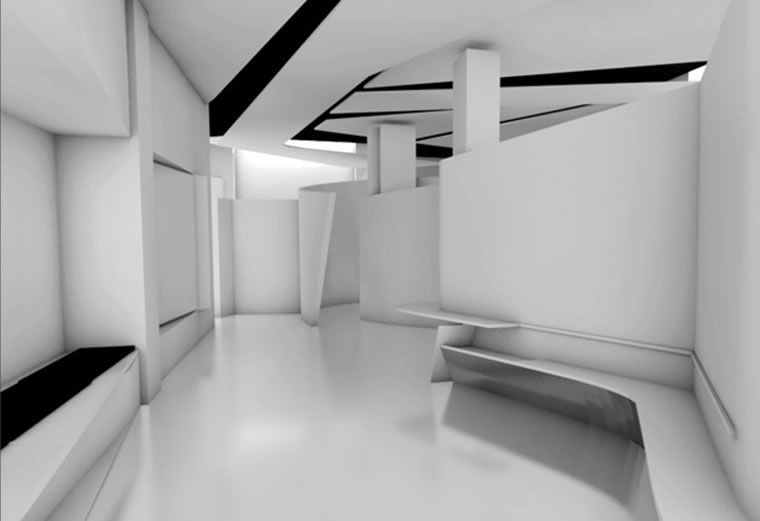
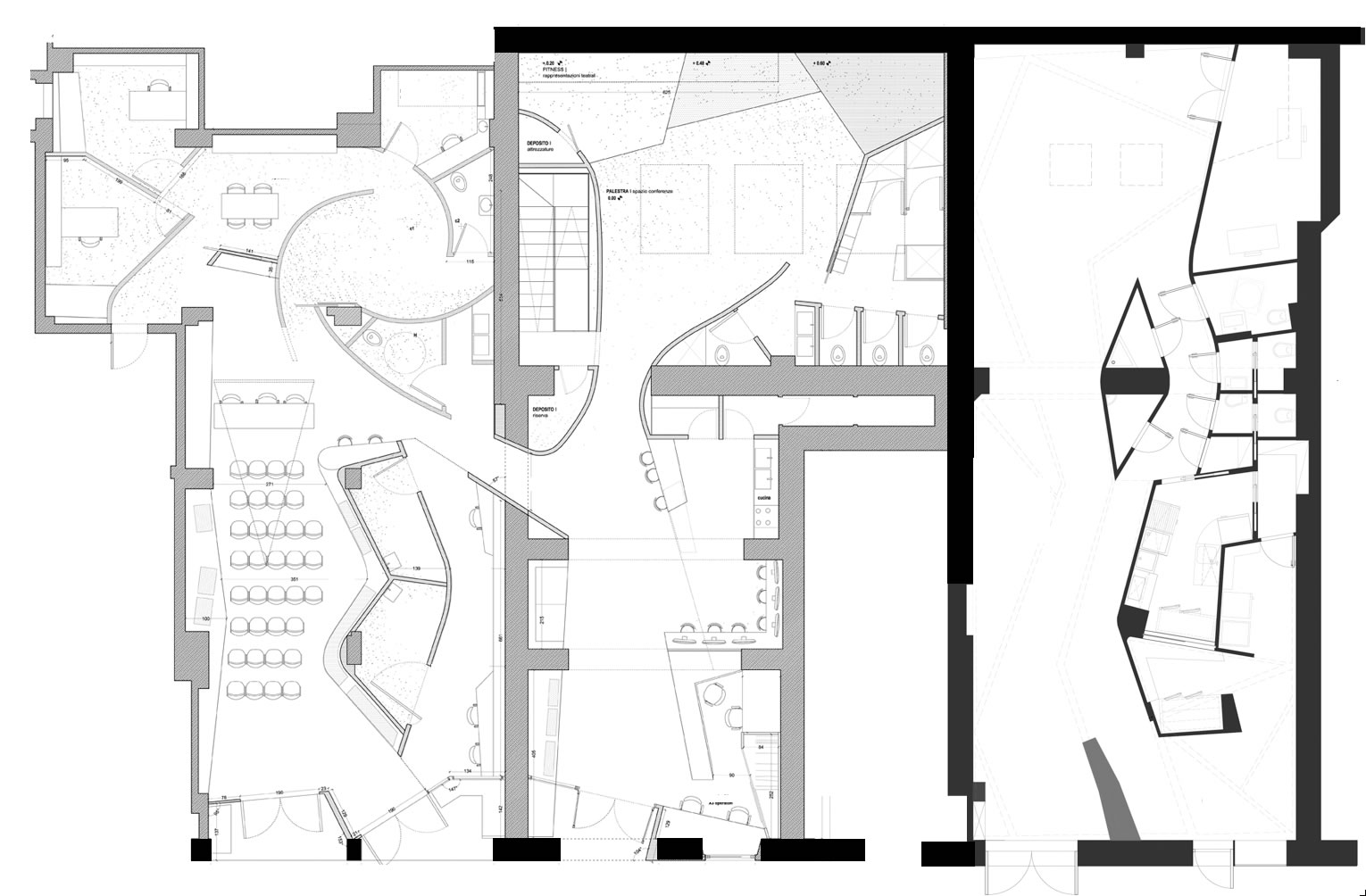
Dennis Marsico
"Giuseppe Terragni Architectures"
Exhibition at Gallery of Architecture"come se" Rome June 2011
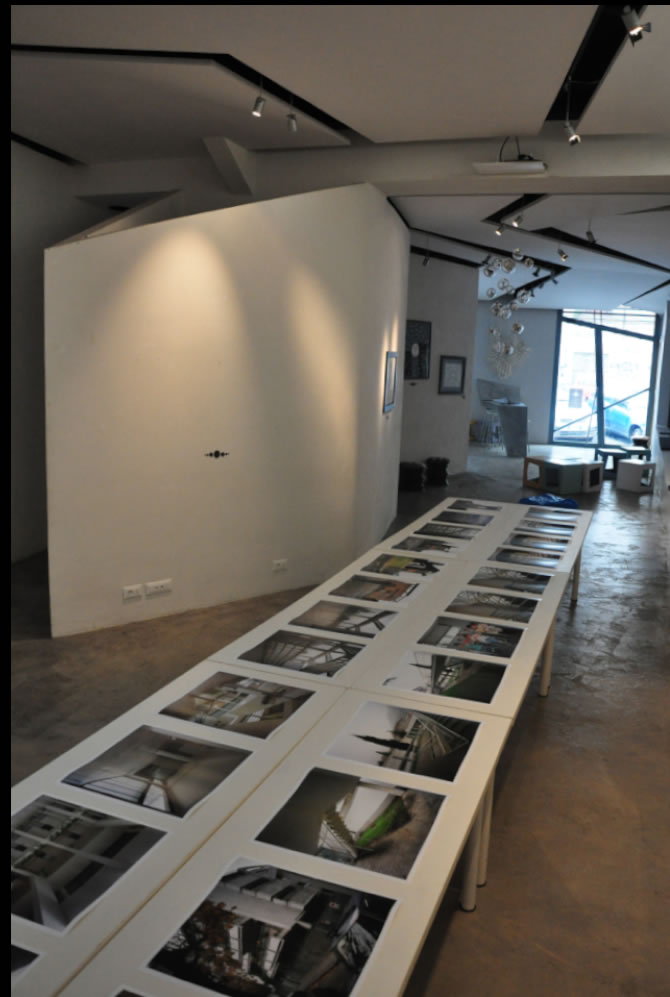 .
.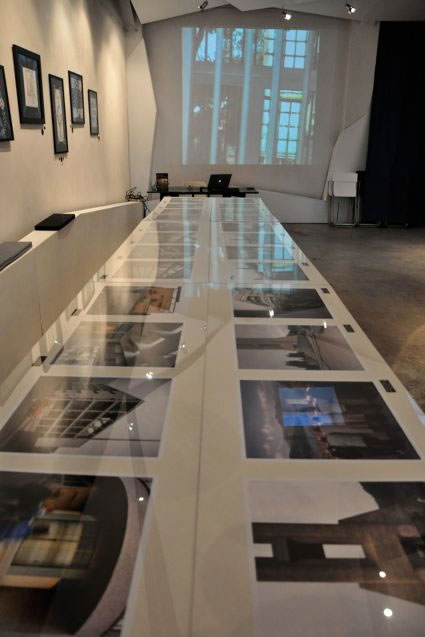 .
.
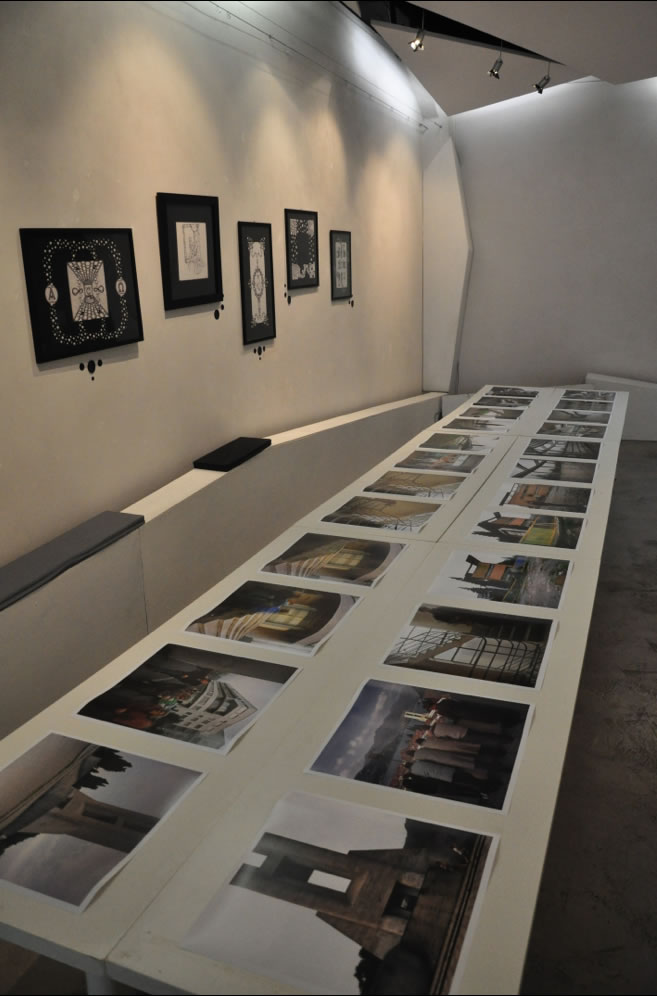

:
Tecno Primitivo
project by NitroSaggio.net designer in charge Emanuele Tarducci with C. Ampolo built in May 2007 at Giardino Sonoro, Florence experimental Sound Garden by Lorenzo Brusci e S. Passerotti "Il Giardino Sonoro" Florence >

Description -- Index & Introduction
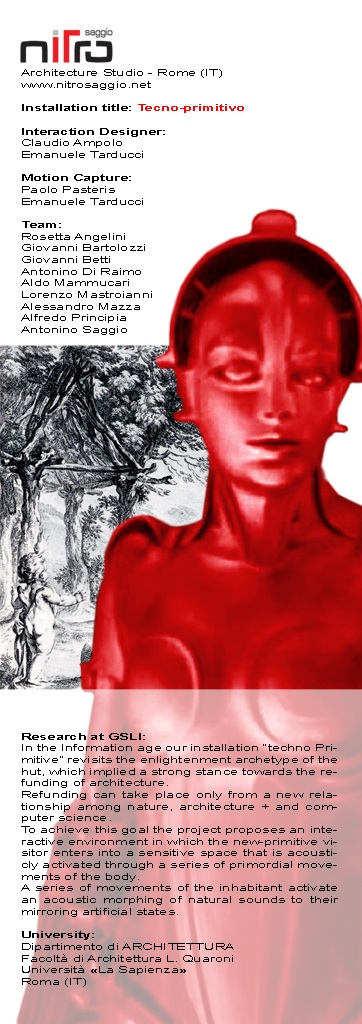
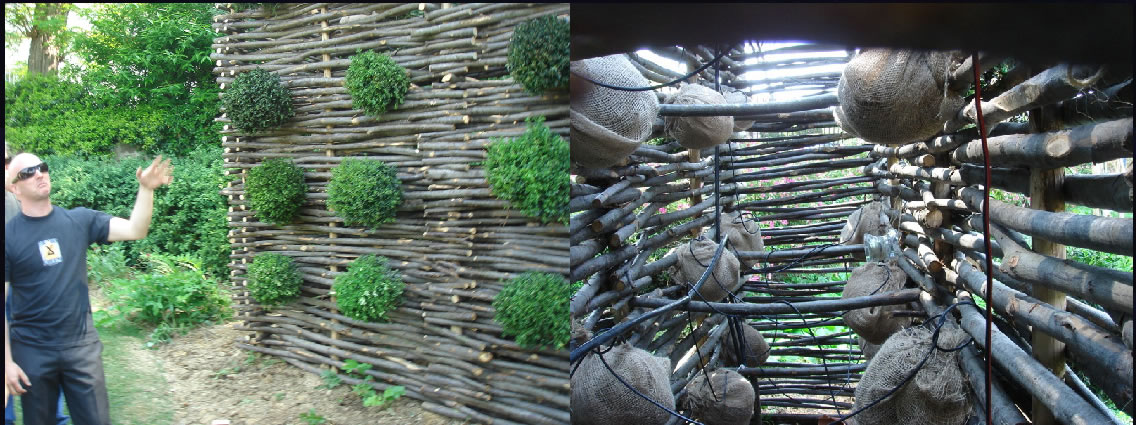
Installation Tecno Primitive >>
on Postural Tecno Primitive Local > You Tube >
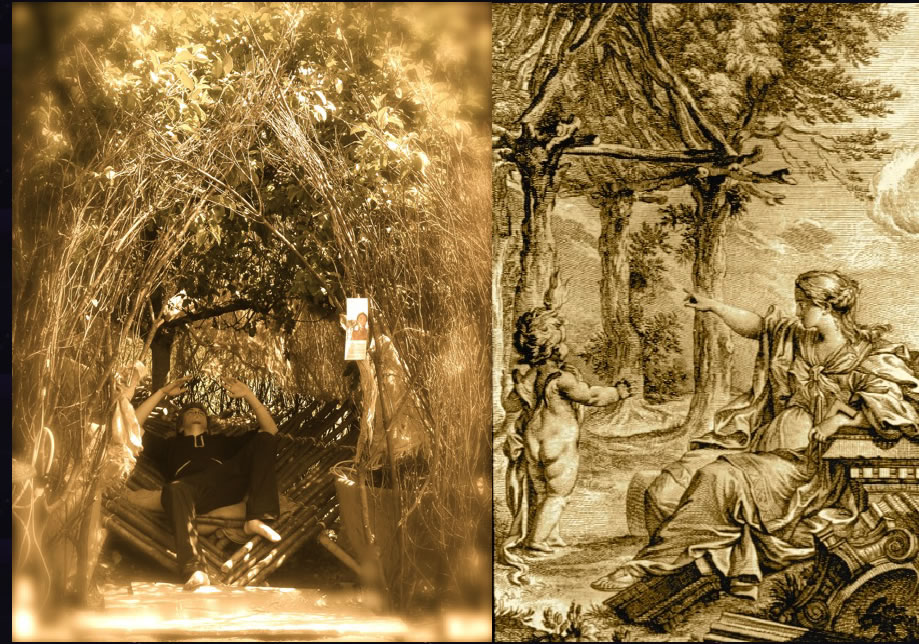
Some bibliography
Do You want To read a text with some topics discussed in this conference? Read here >
More ? Urban Voids and Projects for Rome
1. Antonino Saggio, "Informazione Materia Prima dell'Architettura", Op. Cit., # 118, September 2003 (pp. 5-10). >
2. _____________, "Tempo. Tempo prima dimensione dello Spazio",Il Progetto, # 19, March 2004 (pp. 64-67). >
3. _____________, The search for an Information Space, In Kas Oosterhuis Lukas Feireiss (eds), Game set and Martch II . Episode, Rotterdam 2006 (pp. 214-219)
4. Osvaldo Da Pos, Trasparenze , Icone editore, Padova 1989
5. _____________, "Fenomenologia dei colori trasparenti", in Effetto trasparenza , (eds L. Bortolatto e O. Da Pos), Le Venezie, Treviso 1996
6 Antonino Saggio, "Nuove Soggettivita' L'architettura tra comunicazione e informazione", (Italian Translation of New Subjectivity in Digital | Real Catalog), Op. Cit. , # 112, September 2001 (pp. 14-21). >>
7 ____________, "Interactivity at the center of Avant-Garde Architectural Research", Architectura Design vol 75 #. 1 jan/feb 2005 (pp. 23-29). special Issue 4dspace: Interactive Architecture ed. L. Bullivant >>
8 Timothy Goldsmith, The Biological Roots of Human Nature: Forging Links Between Evolution & Behavior , Oxford Univ. Press, 1994
9 _______________, "Come vedono gli uccelli", Le Scienze, Italian edition of Scientific American, # 460, December 2006
10 Antonino Saggio, Architettura e Modernità. Dal Bauhus a La Rivoluzione Informatica, Carocci, Roma 2010
